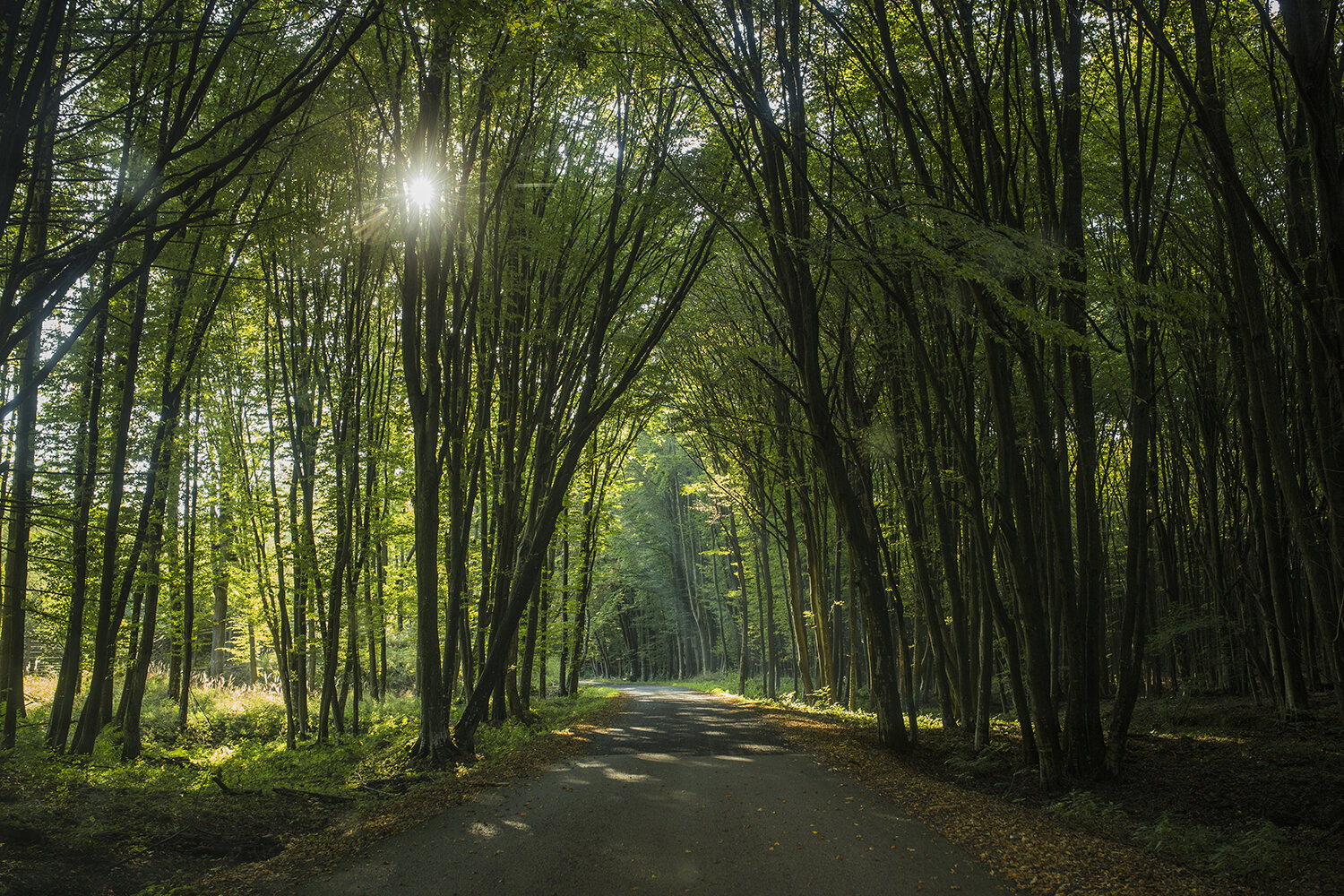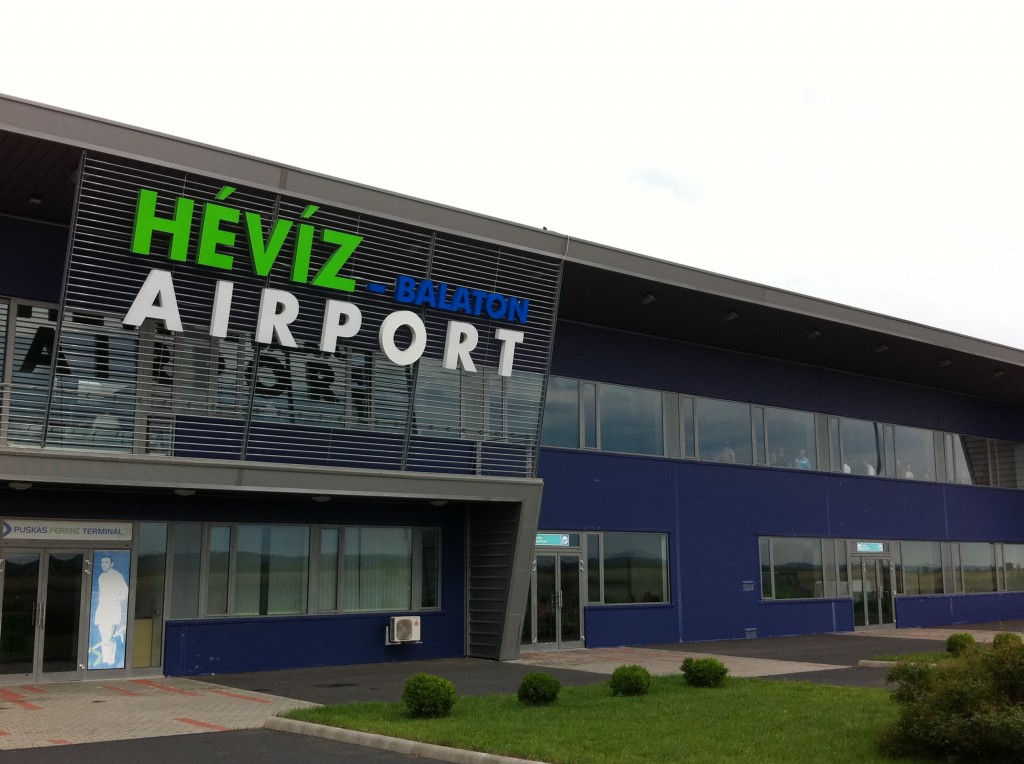For the best excursions you only have to do one thing: take the first step. This is what we did when we explored Zirc and Bakonybél, two towns of the Balaton Uplands close to each other. First we found out that the library of Zirc is even better than its arboretum and its ruins. Then, in Bakonybél, even though we didn’t bump into neither any indigenous people, nor any outlaws, we did see the snowy mountain peaks of the Alps, examined Mars from a high-tech visitor center, while also discovering the little brother of Transylvania’s Red Lake.
Zirc
Zirc, also called the capital of Bakony, was founded in 1182 when, upon the invitation of Béla III of Hungary, the first Cistercians arrived to Bakony from Clairvaux, France and built their towerless church and monastery in an early Gothic style.
Unfortunately, we know little about the early history of the monks, as the documents and books of Zirc disappeared without a trace in the 16th century. We do know, however, that the original location of the abbey was somewhere else in Bakony, and they only relocated to Zirc in 1198. The culture brought here and represented by the monks influenced the area for centuries.
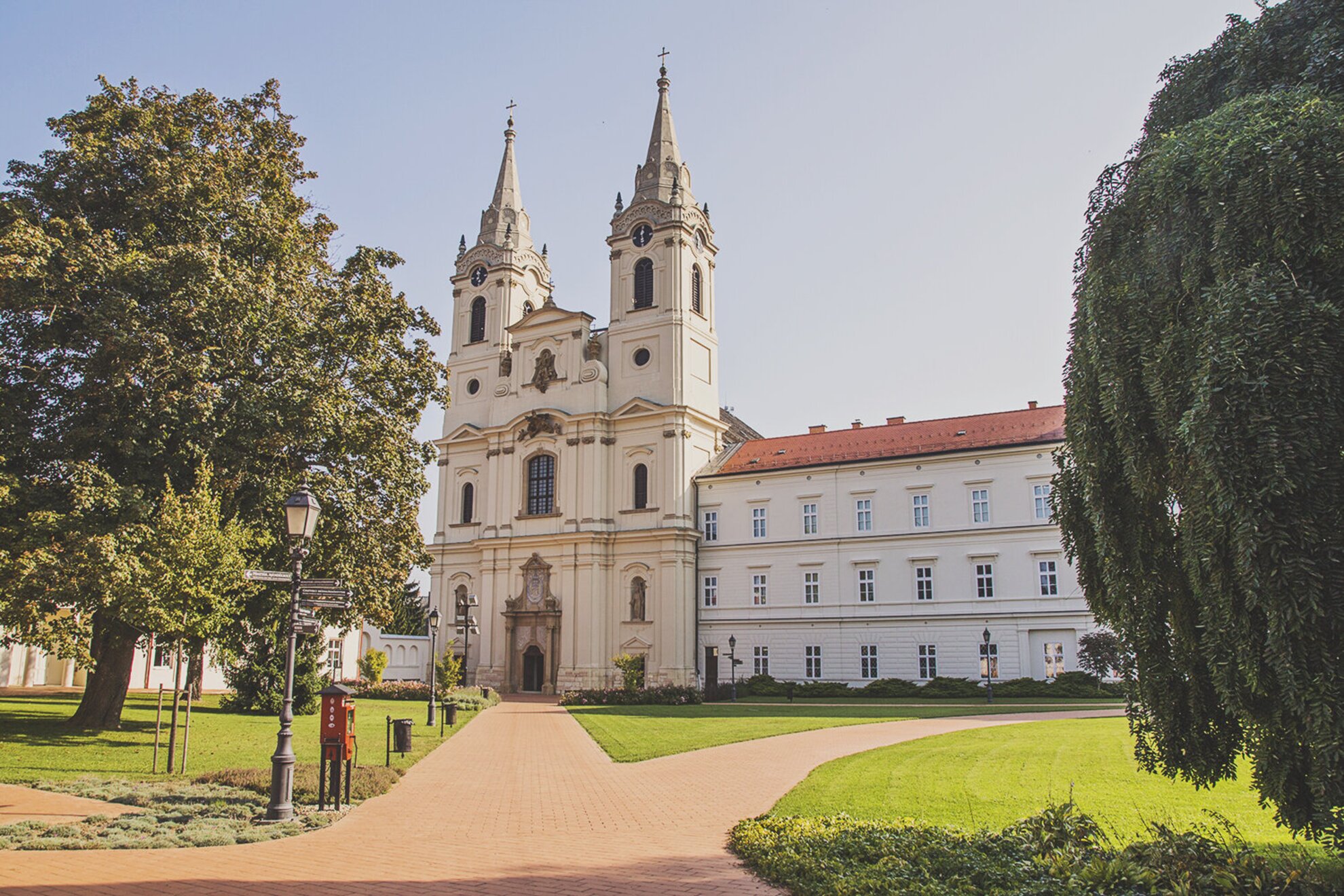
Zirc was destroyed during the Turkish occupation, and the monks fled with the population. We can see the remains of the original, 800 years-old Romanesque abbey in the garden of ruins.
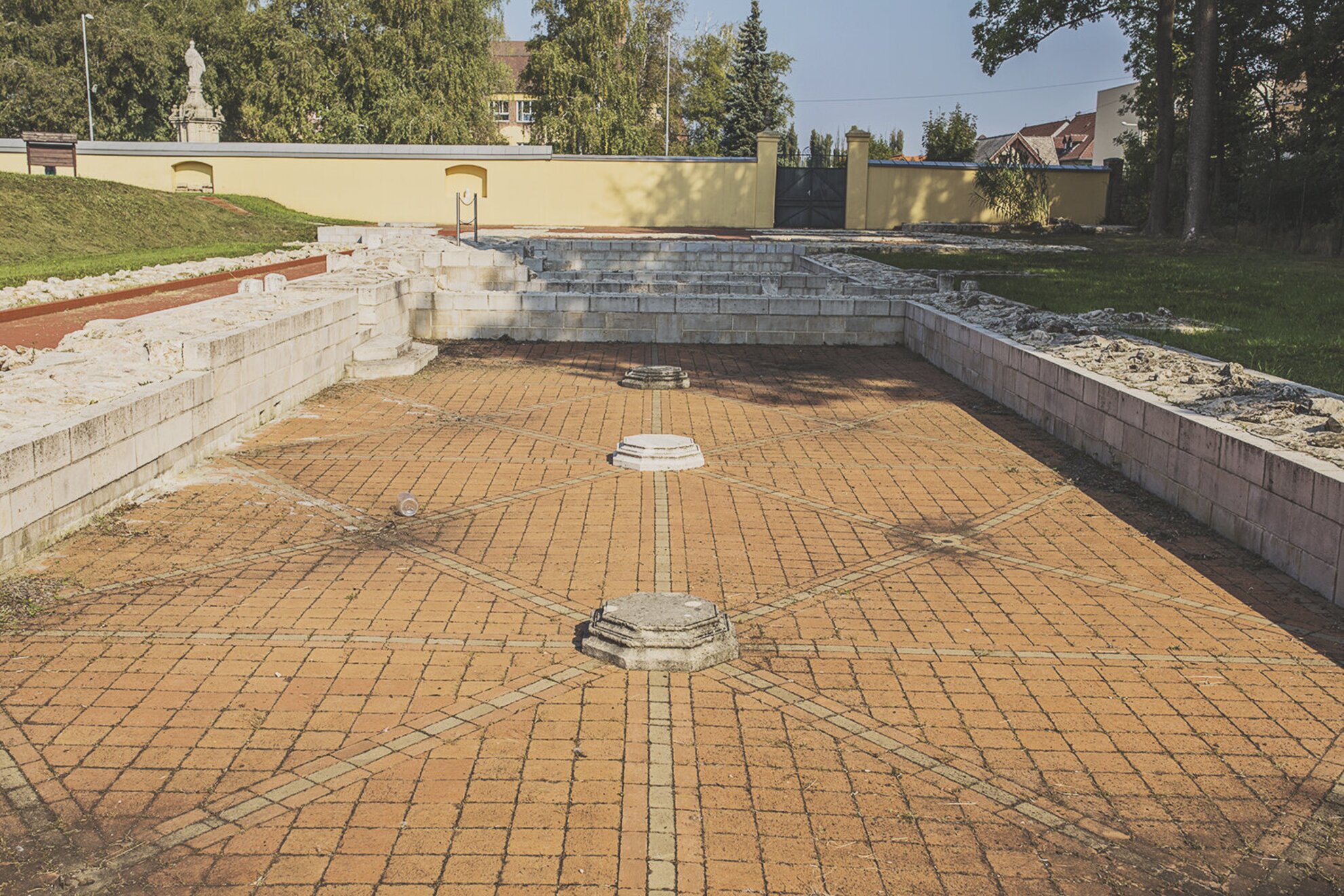
The Cistercian order redeemed its medieval lands at the beginning of the 18th century, and let those Roman Catholic families settle down here that accepted perpetual serfdom. The Baroque church and the classicist monastery were both built around this time.
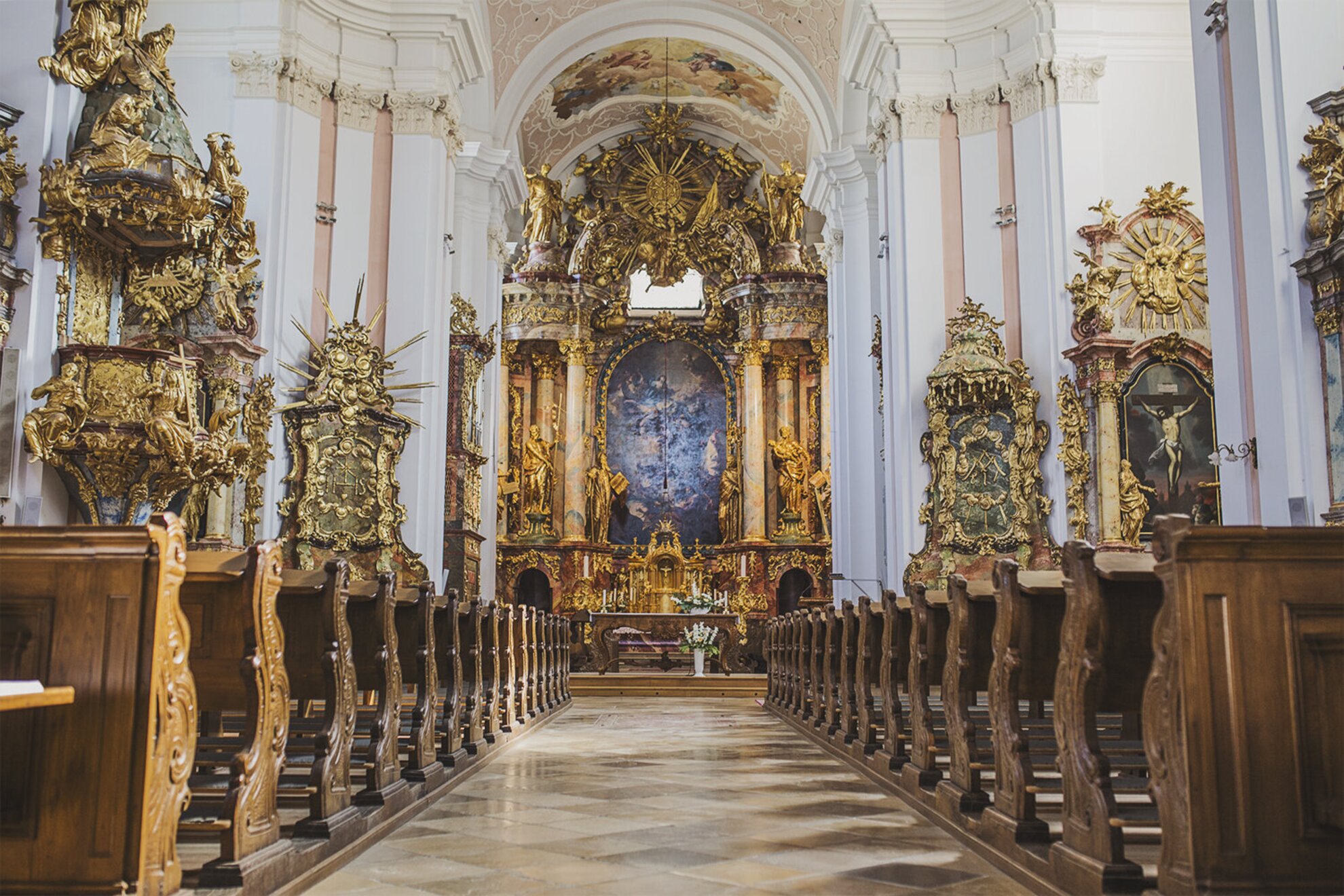
After the Jesuit order was dissolved at the end of the 1700s, their now orphaned high schools were taken over by the Cistercians, thus they became a teaching order.
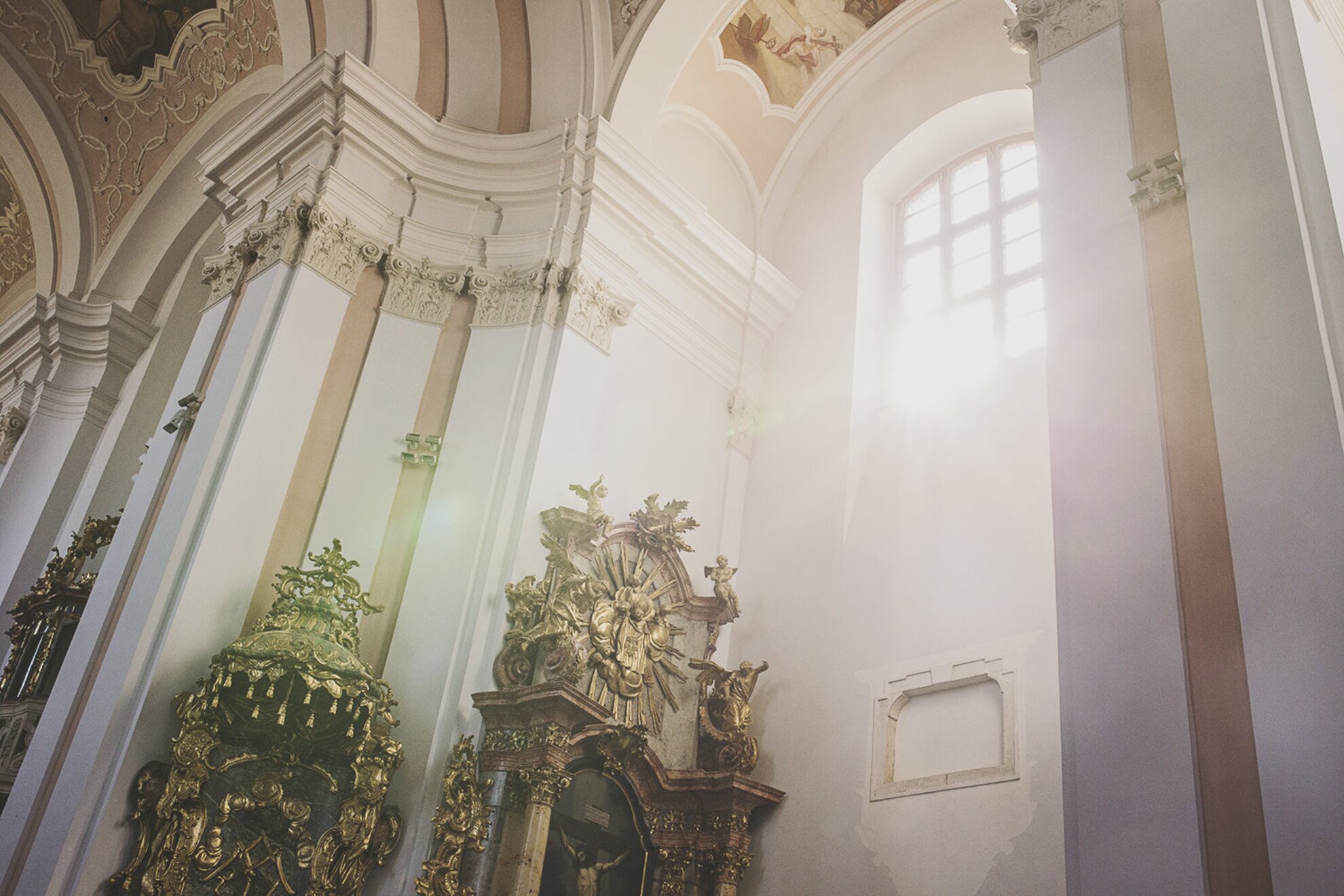
The estates of the Cistercian Abbey of Zirc, including its schools, were nationalized in 1945, and the totalitarian communist dictatorship disbanded the Cistercians. Its members lost their jobs, homes, and they couldn’t operate for 40 years. The more fortunate ones managed to immigrate to America, but the rest faced internment camps or imprisonment. The Congregation of Zirc became an institution recognized by the state once again following the end of communism in Hungary.
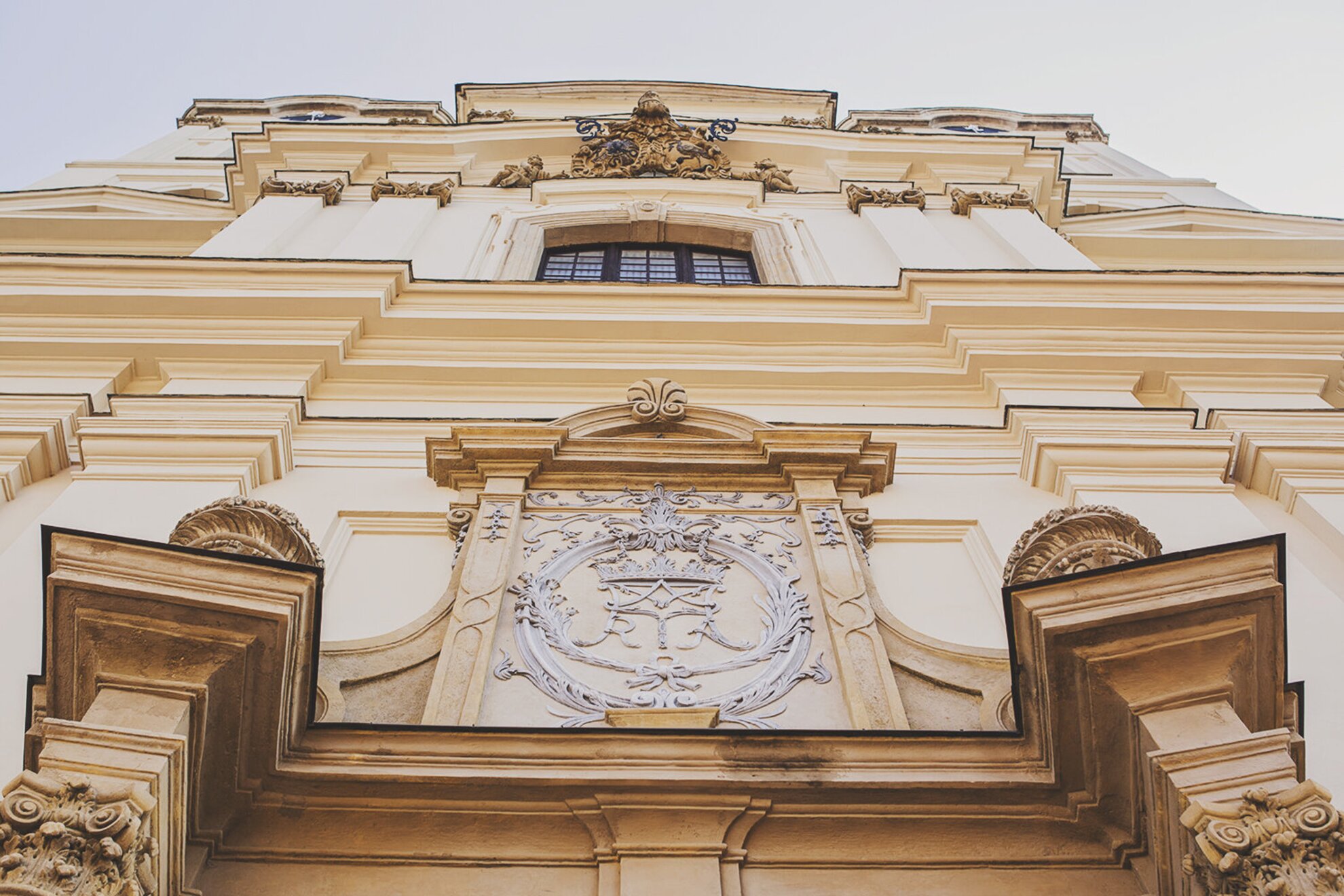
It’s good to keep an eye on the website of the abbey, as they host plenty of cultural events.
To check out the abbey’s library sounds like just another program at first, but you’ll be amazed as soon as you take one step on the lacquered wood flooring of the book-filled room. Located on the second floor of the building, the library has a unique collection of 65 thousand books. What’s more, the library owns 70 items of incunabula originating from the 1450s and the 1500s, the period that was the golden age of printing.
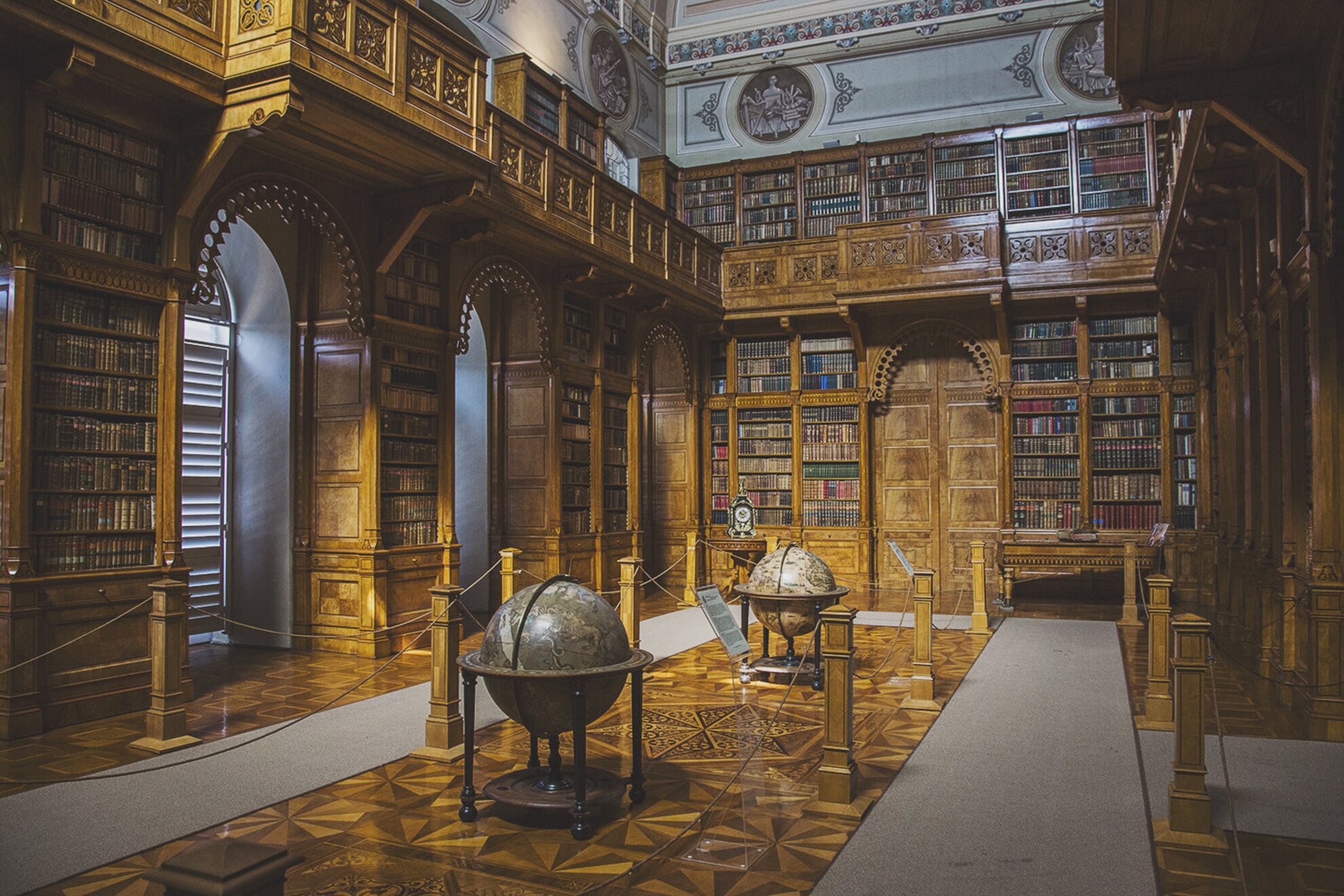
The foundation of the exceptional heritage was laid by the monks of Heinrichau, who rebuilt Zirc and the abbey in the 18th century.

Theology is the theme of a significant part of the collection, but there are books and documents of other disciplines in this room that looks just like it belongs to a Dan Brown novel full of riddles and mystery .
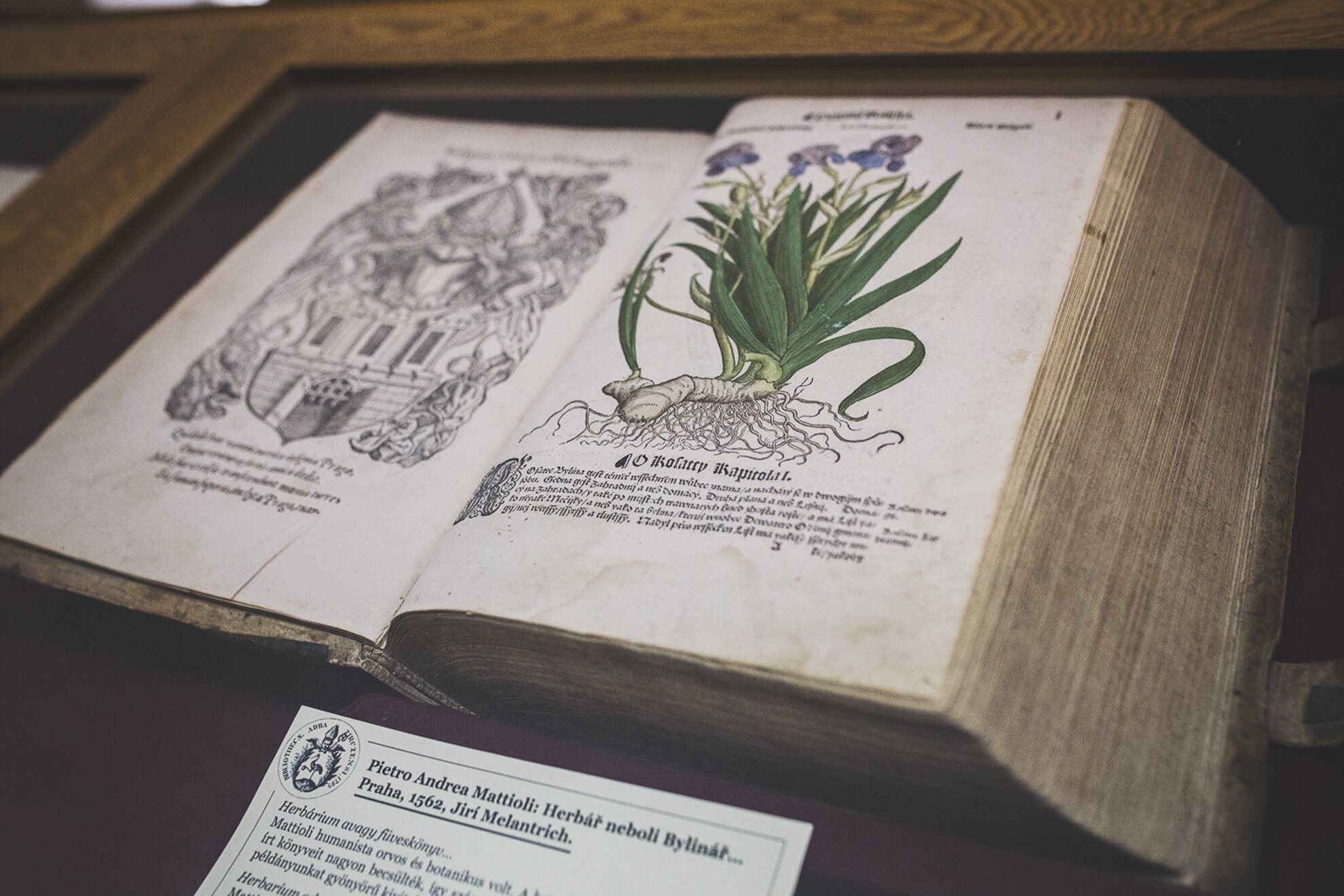
The other important sight of the abbey is the 18-hectares Cistercian Arboretum of Zirc, which is gorgeous in every season, with the flora looking its best all year long.
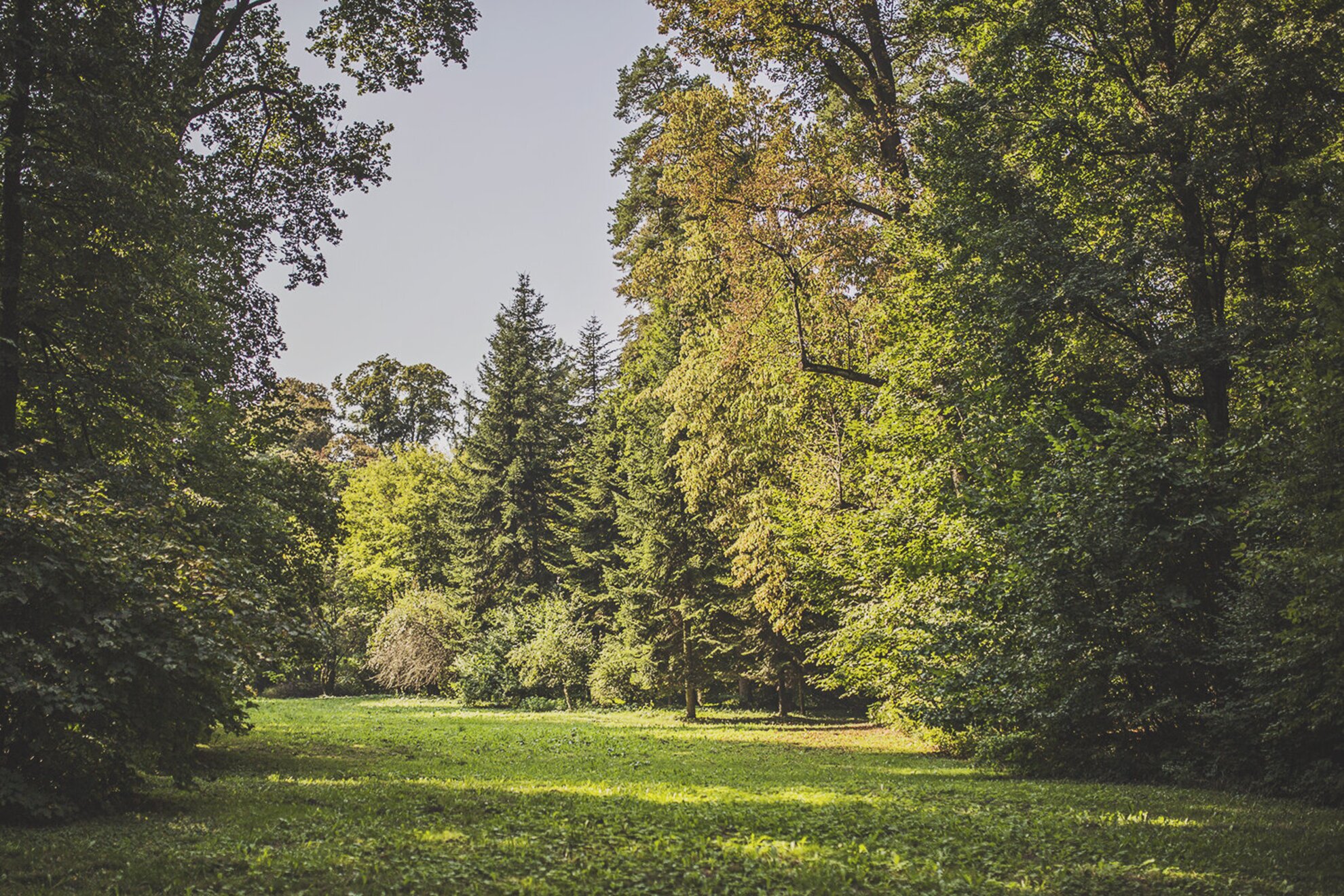
It has two entrances: one way to get in is from the direction of the town, through Damjanich Street right next to the lake, or from the ornamental garden of the abbey. Groups of at least 25 people can get a professional guide for an extra fee if they make an appointment in advance.
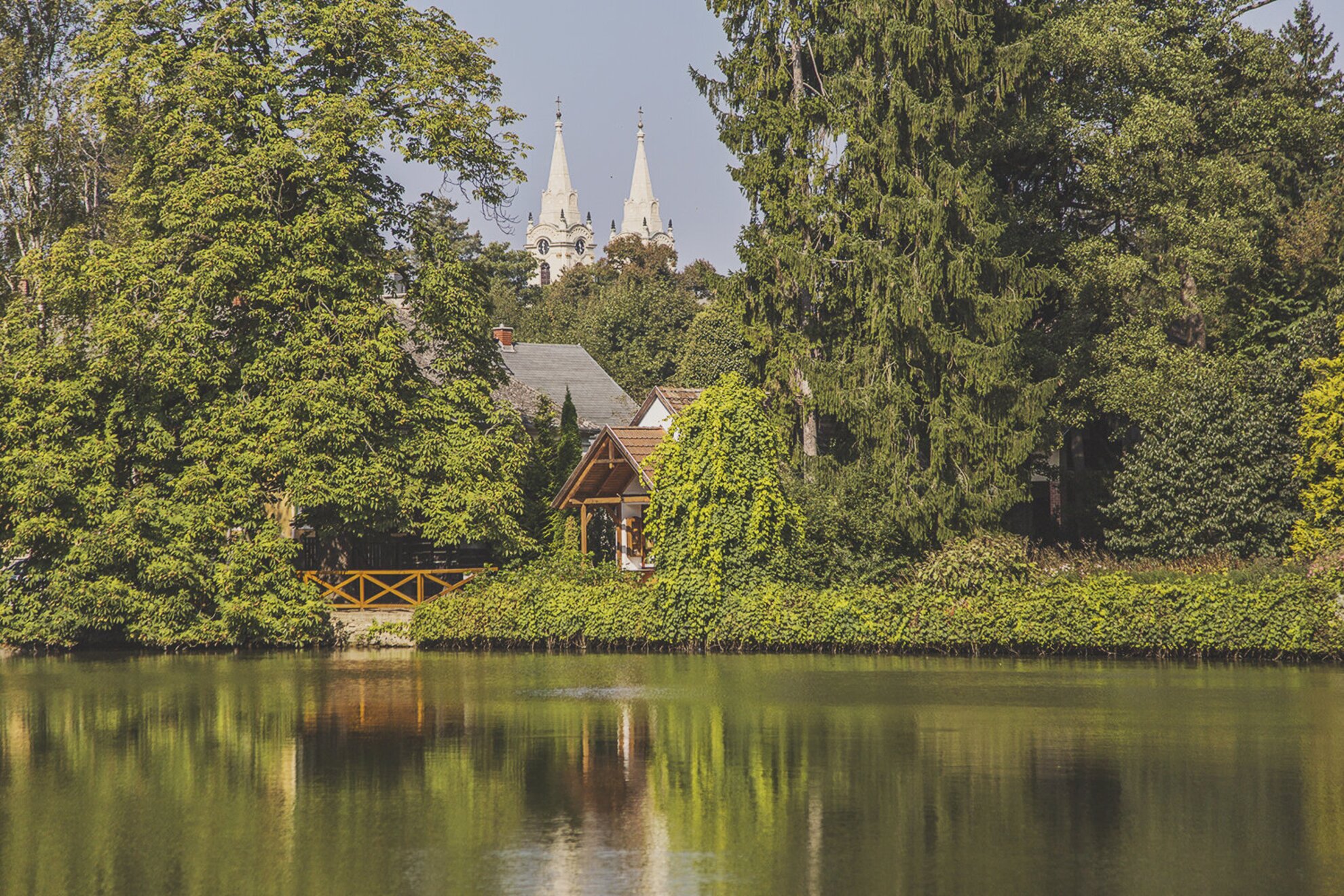
Spring is the time to visit to see the thousand colors of ornamentals blooming on the shore of the fishpond; summer is all about fragrant lindens and all the shades of green; the colorful leaves are the main attraction during fall; while the frost and snow covered plants are there to amaze us in winter.
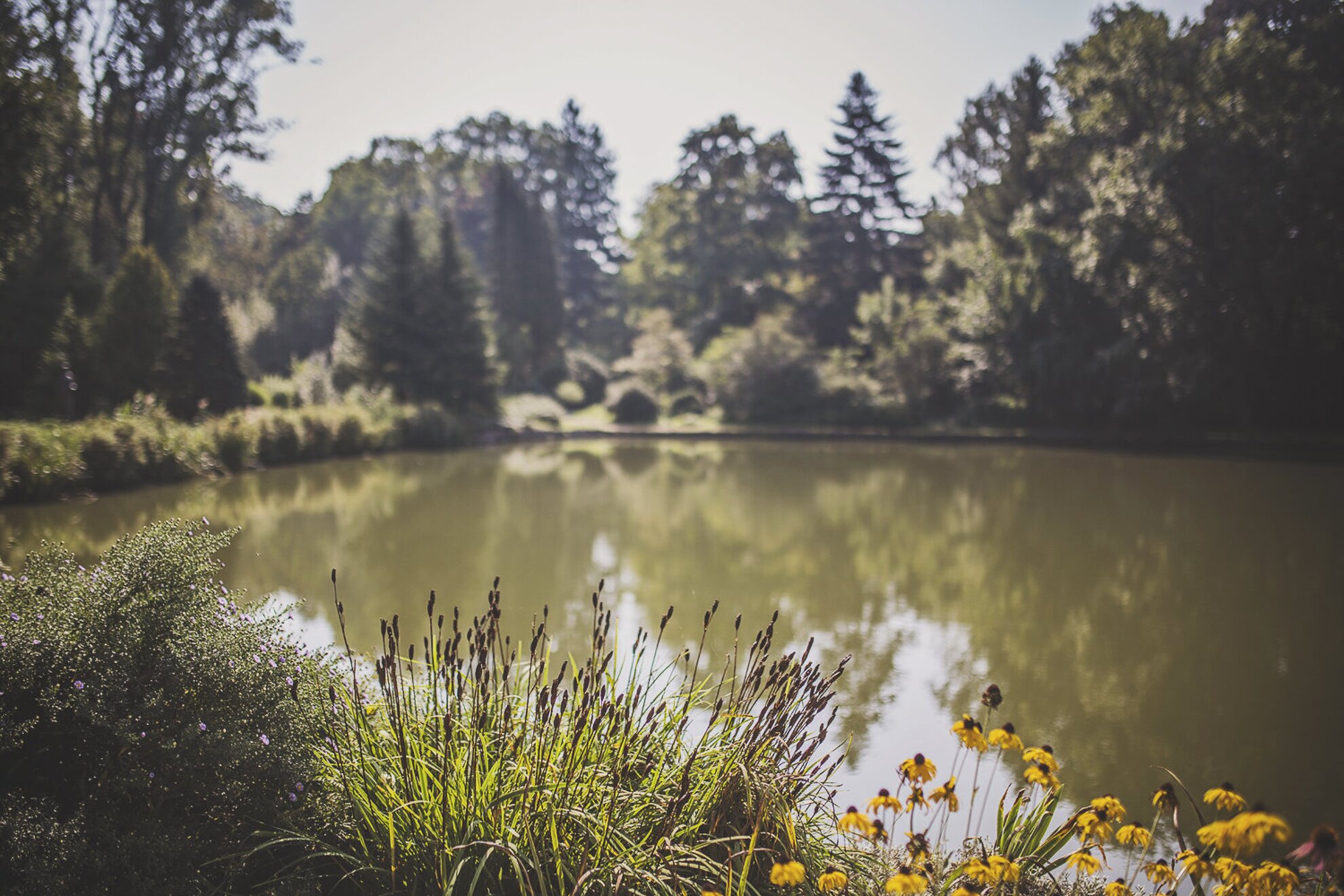
Cuha Stream also runs here, and during the summer heat it often disappears entirely. Don’t be surprised by this: sometimes it dries up and then later it fills up again when the weather turns rainy in the fall. Even if there’s no water in it, we can walk across the creek through the two Baroque bridges that were built in 1759.
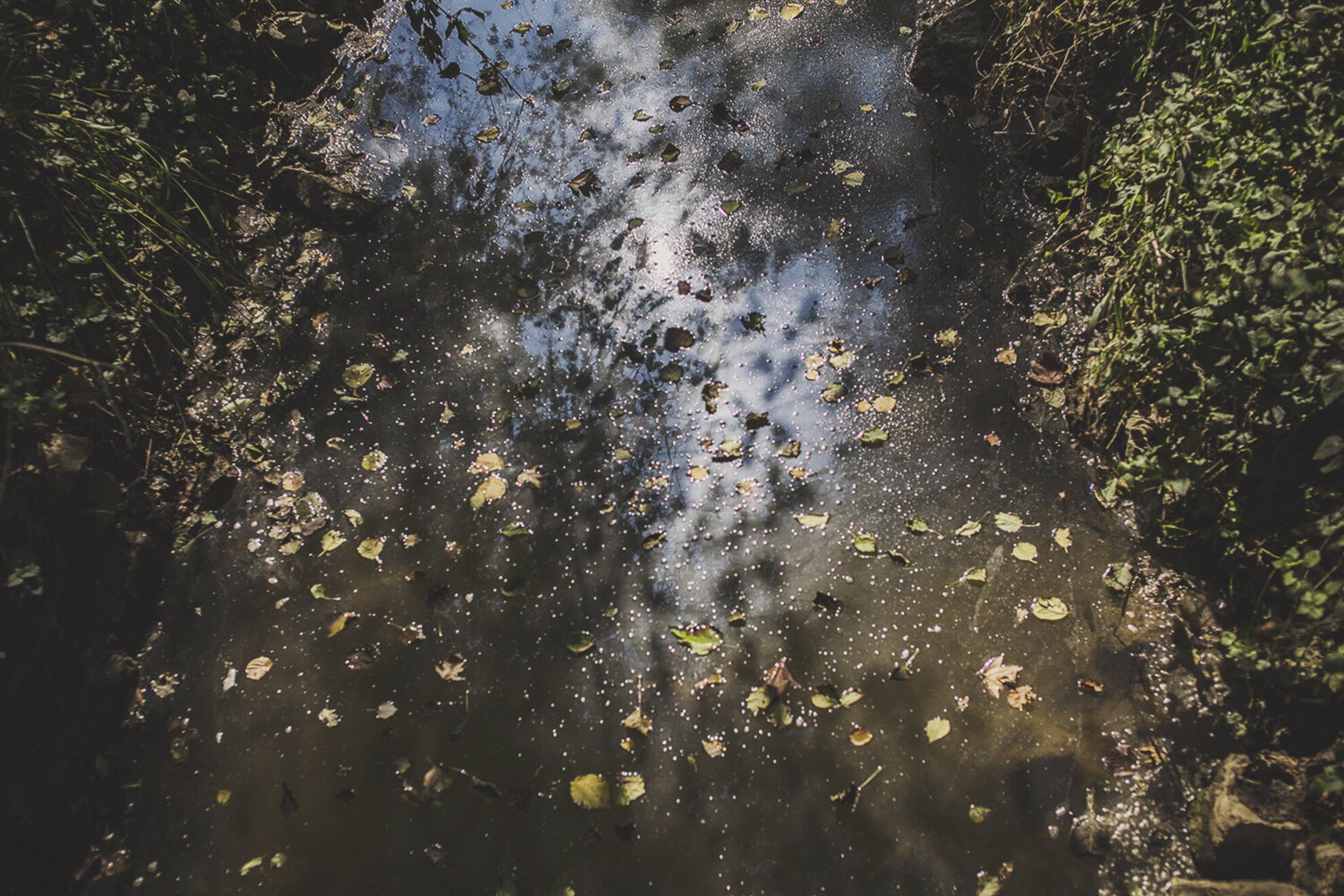
The arboretum was established in the protected surroundings of the abbey in the 18th century, with the design of an English garden. This means that every free space of the garden is used, the landscape alternates between colorful plants and green lawn, while winding roads and paths cross each other through them.
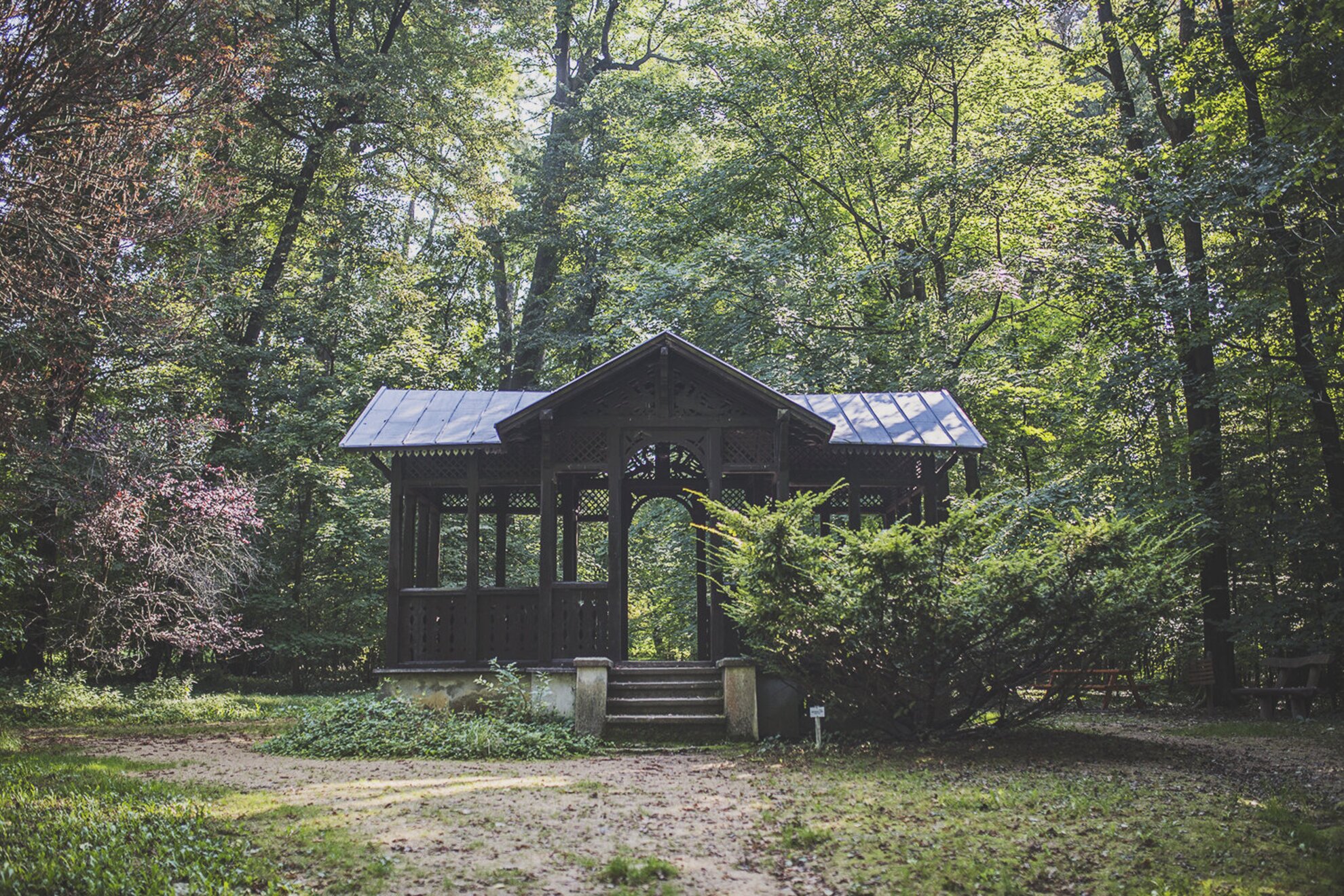
The park is also Hungary’s tree collection of the highest altitude. Abbot Antal Dréta did significant tree plantings in the area; in 1803, he hired English garden designer Gregorius Mayer to organize the process. The famous, 400 meters long linden alley was planted then. Legend has it that this road is what remained of the former Roman road that connected Győr and Veszprém.
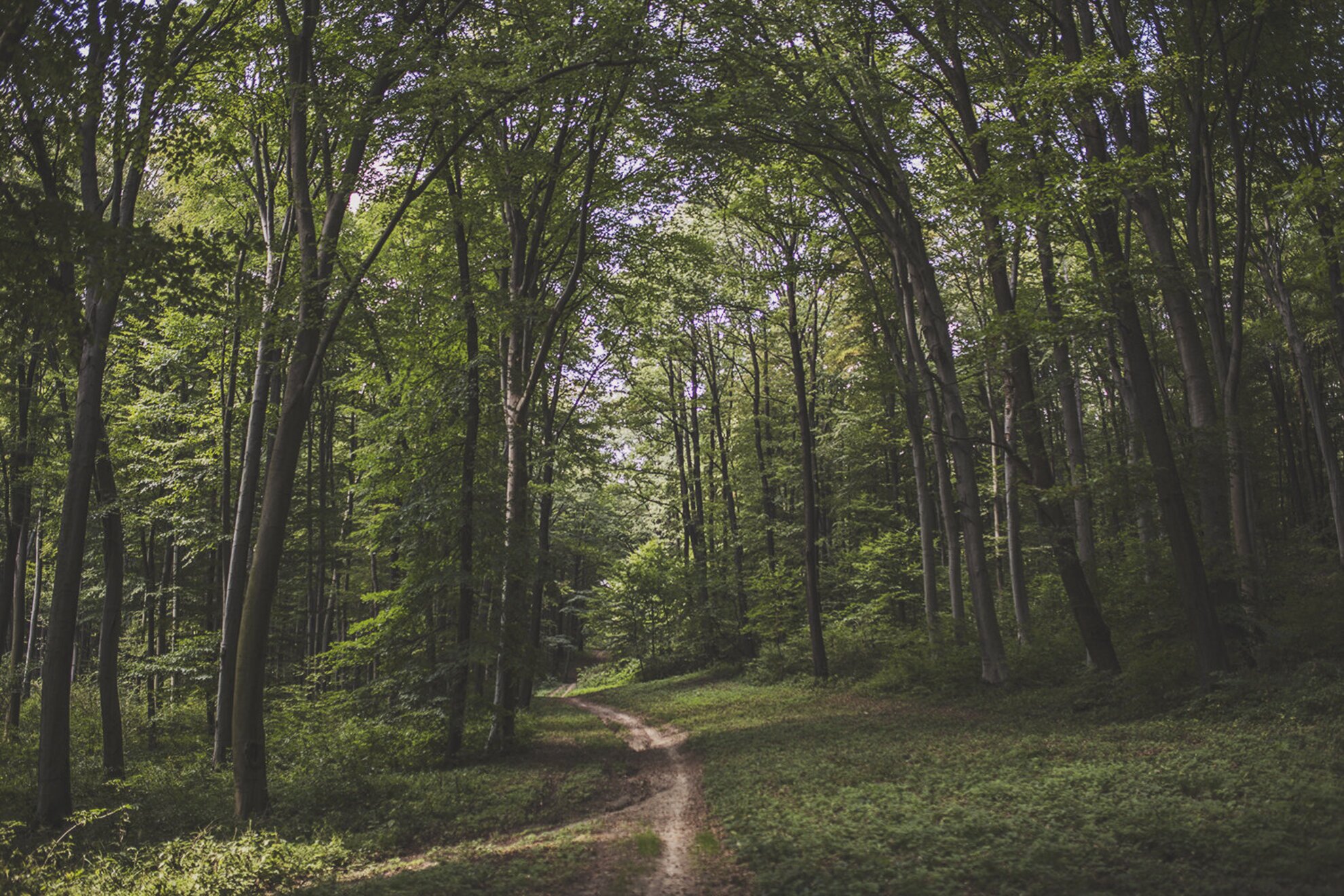
The beautiful fishpond at the main entrance was artificially created at the beginning of the 1700s but not just because for its aesthetics. It was forbidden to eat meat during the obligatory fasting, so the monks needed a lot of fish.
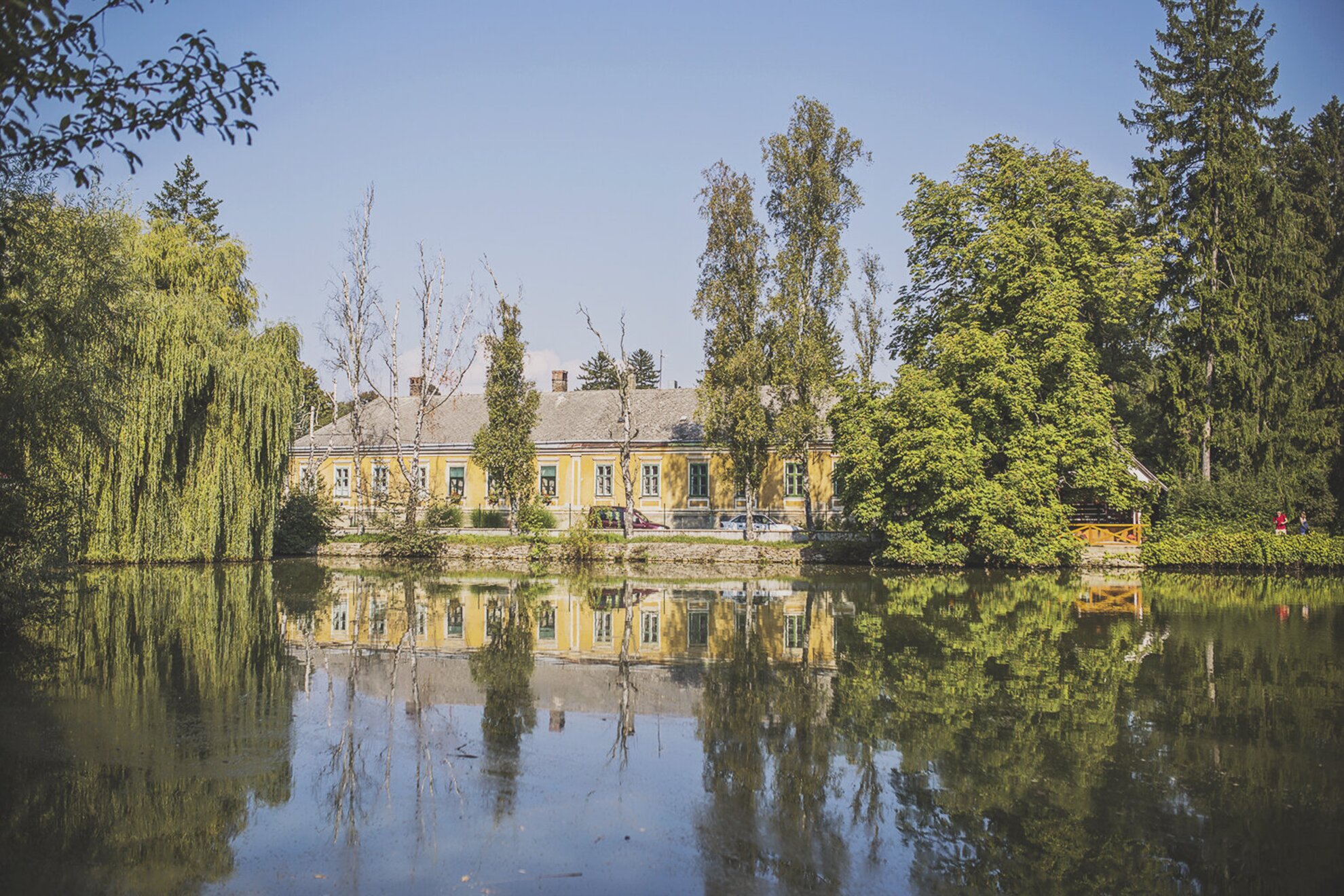
There’re 600 species of trees and shrubs in the arboretum and 80% of them are deciduous. Besides the typical native plants of the region, we can also see so called exotics: these are species like magnolias or maples that are originated from foreign countries.
And since we are surrounded by trees and shrubs, it’s no wonder that we can hear the songs of various bird species, moreover, there’s a good chance that we’ll bump into squirrels. Due to the fishpond, we can even observe waterfowl.
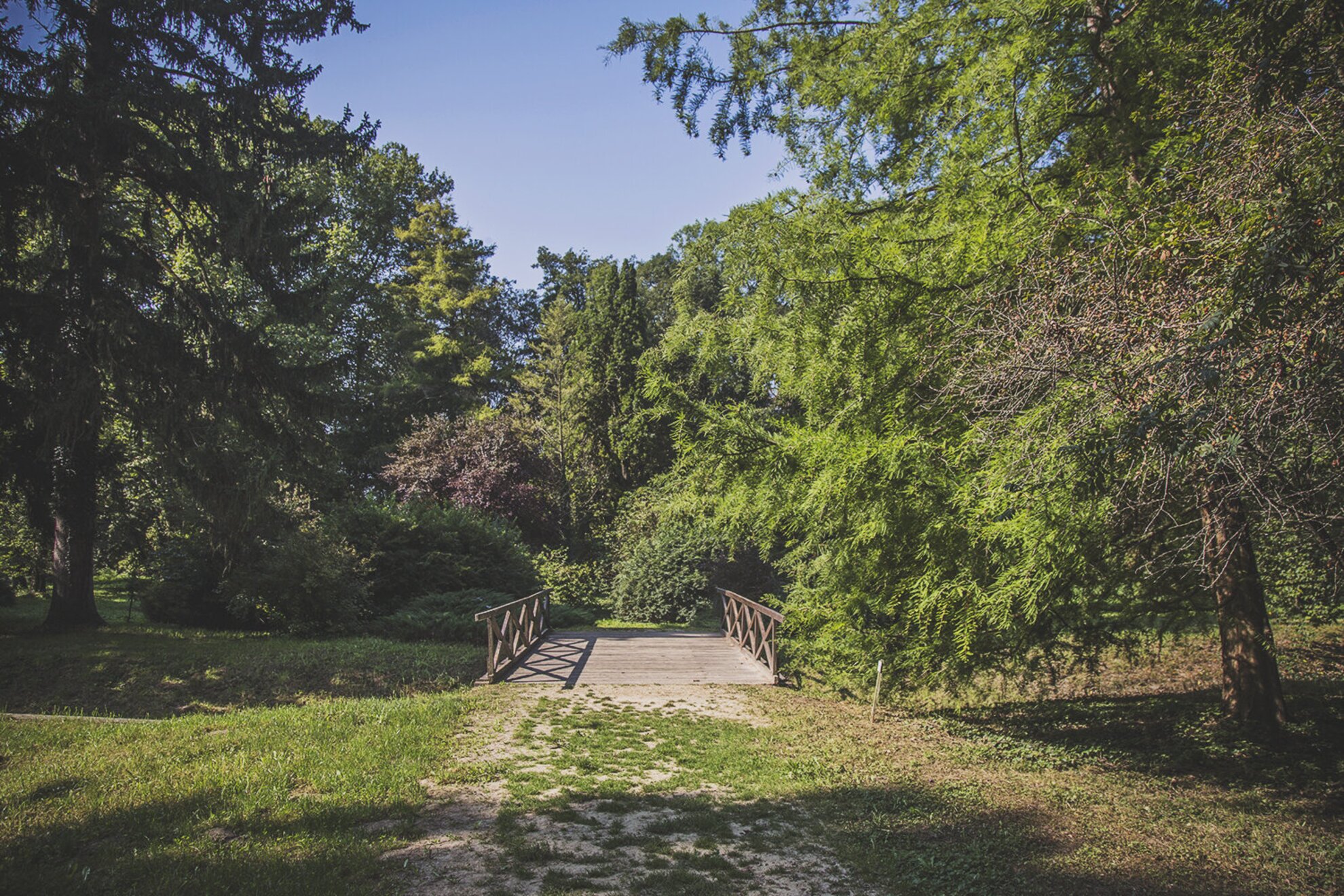
If we are talking about Zirc and the abbey, we mustn’t forget about the great beer-making past of the order. The first time a beer was drafted in the brewing house called Braxatorium was on October 29, 1735. In 2015, a couple of hundred years later, the abbey decided to revive the tradition. Today, the beers here – like Zirc Abbey Pils, Belgian, or Wheat – are created by manual labor but with modern techniques. Unfortunately, the brewery of Zirc Abbey Manufactory isn’t open for visitors, but their website shows all the places where their beer is available.
After exploring Zirc, the nearby 5 kilometers long Pintér-hegyi Study Trail with its 17 stations is worth a tour, as it has a geological demonstration area, and also some spots for campfires where you can have a little barbecue.

What’s more, there’s even a playground and a forest gym for children, not to mention the ski and sled course during the winter. Furthermore, a 1.8 kilometers long trail about forestry is connected to the study trail.
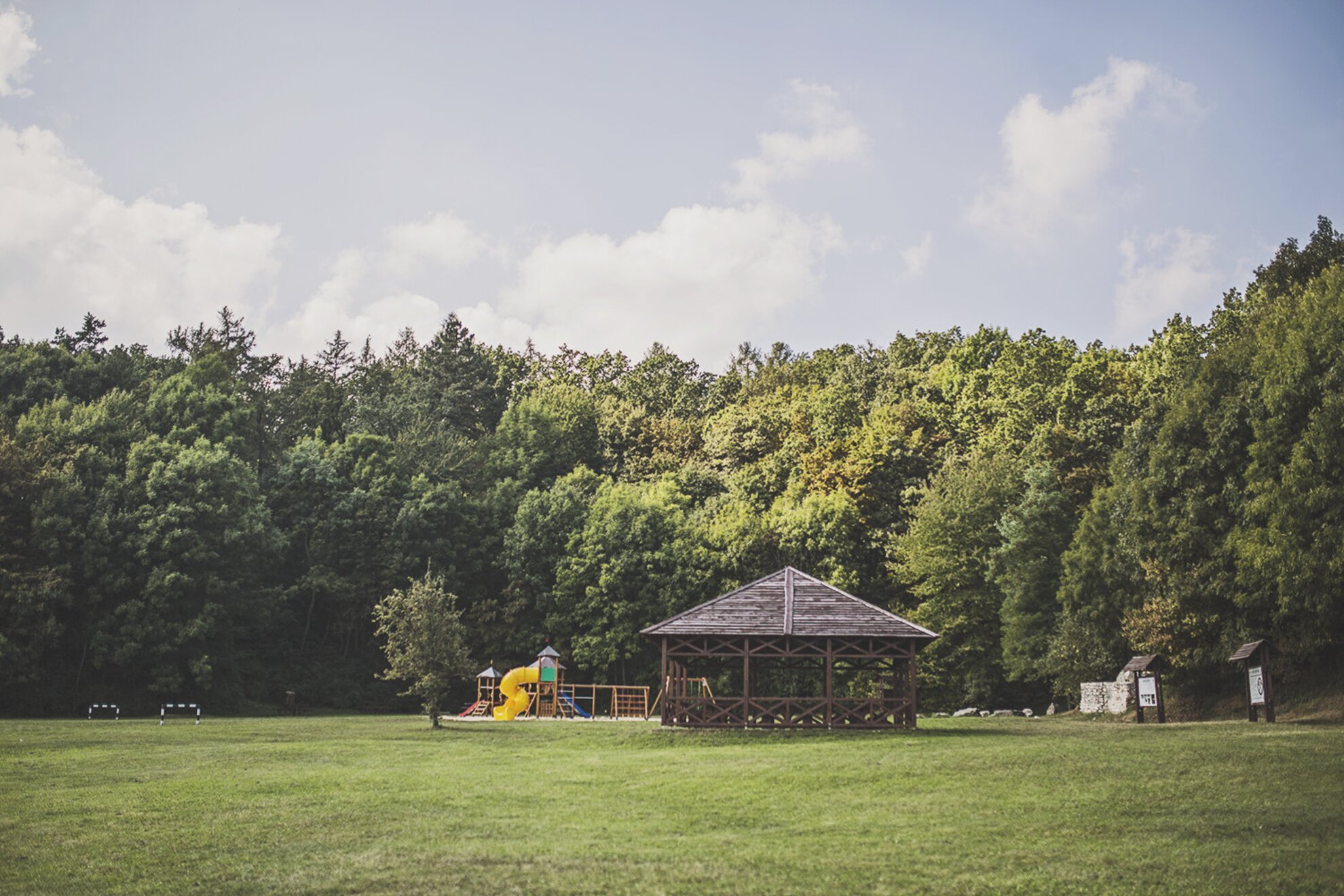
Bakonybél
Only 16 kilometers away from Zirc, Bakonybél can be found in a beautiful valley. Here we are surrounded by natural attractions. As the area is basically composed of limestone, there are plenty of caves to visit in the nearby forests that are filled with streams. Some of these caves like Ördög-lik, Likas-kő, Pörgöl and Odvaskő Caves, Kis Pénzlik and Nagy Pénzlik were used by the outlaws of Bakony as hideouts, so you might even find the hiding place of a famous bandit while exploring the area.
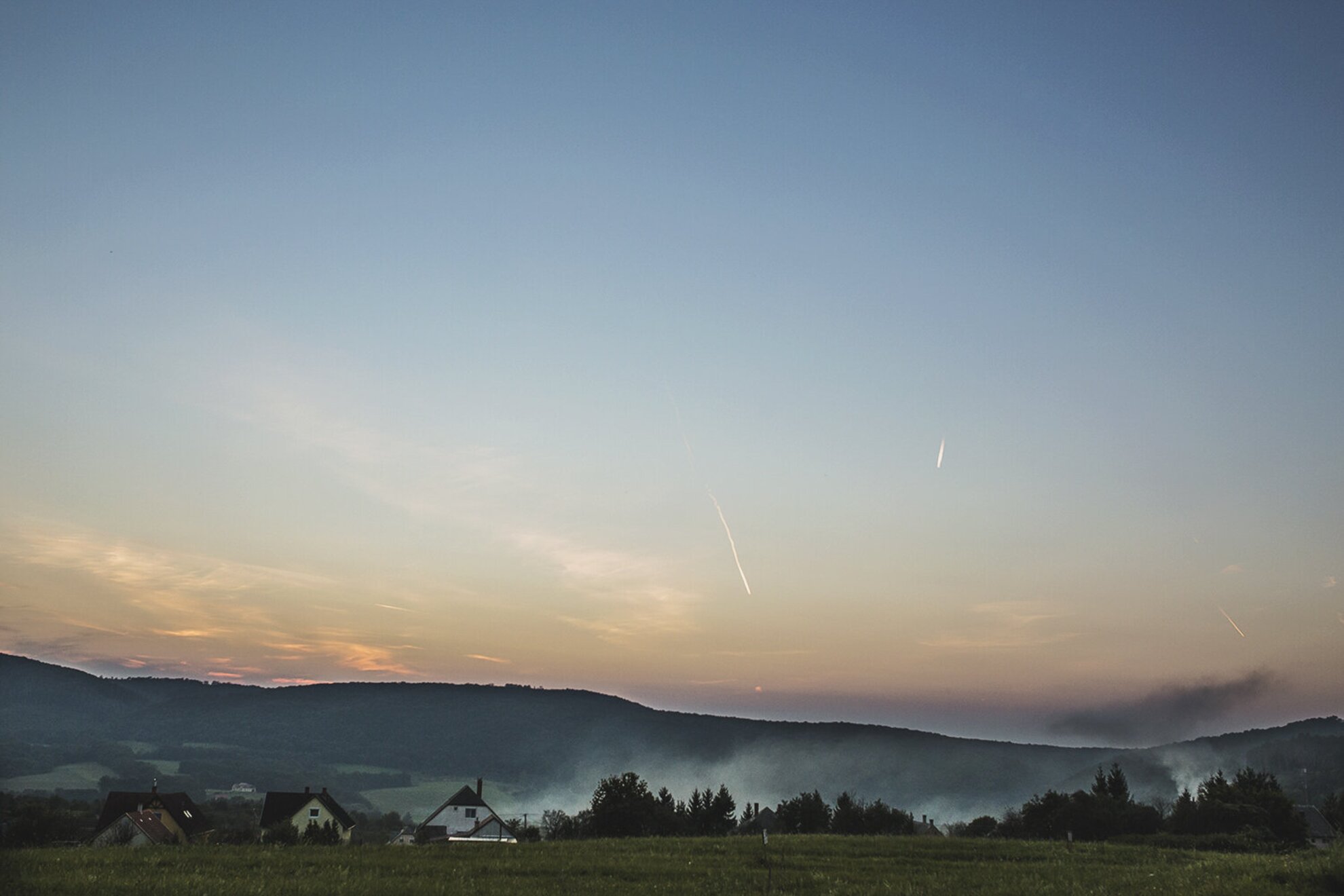
You can visit a nature conservation and forestry collection at House of the Bakony Forests, while at the local history museum we can learn about the traditions of the people of Bakonybél who work in forestry and woodworking.
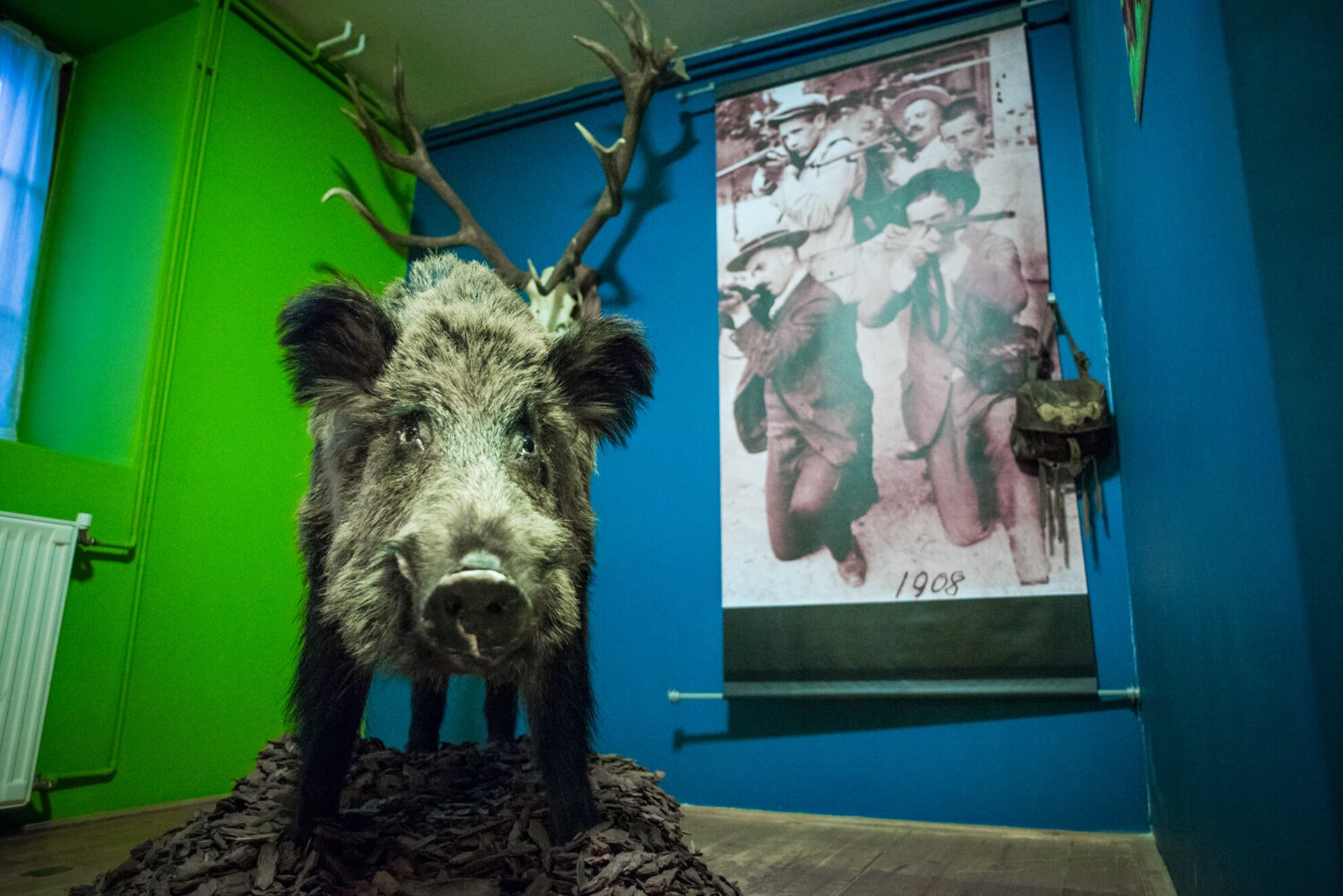
The most famous part of the place is probably the Borostyán-kút (meaning “Ivy Well”) or, as it’s also called Szentkút (meaning “Holy Well”). Its story is connected to the founding saints of the monastery of Bakonybél, Gunther of Bohemia and Gerard of Csanád, who settled here to live as hermits. Pope Gregory IX mentions the chapel dedicated to the Virgin Mary above the cliff of Saint Gerard in his papal bull issued in 1230.
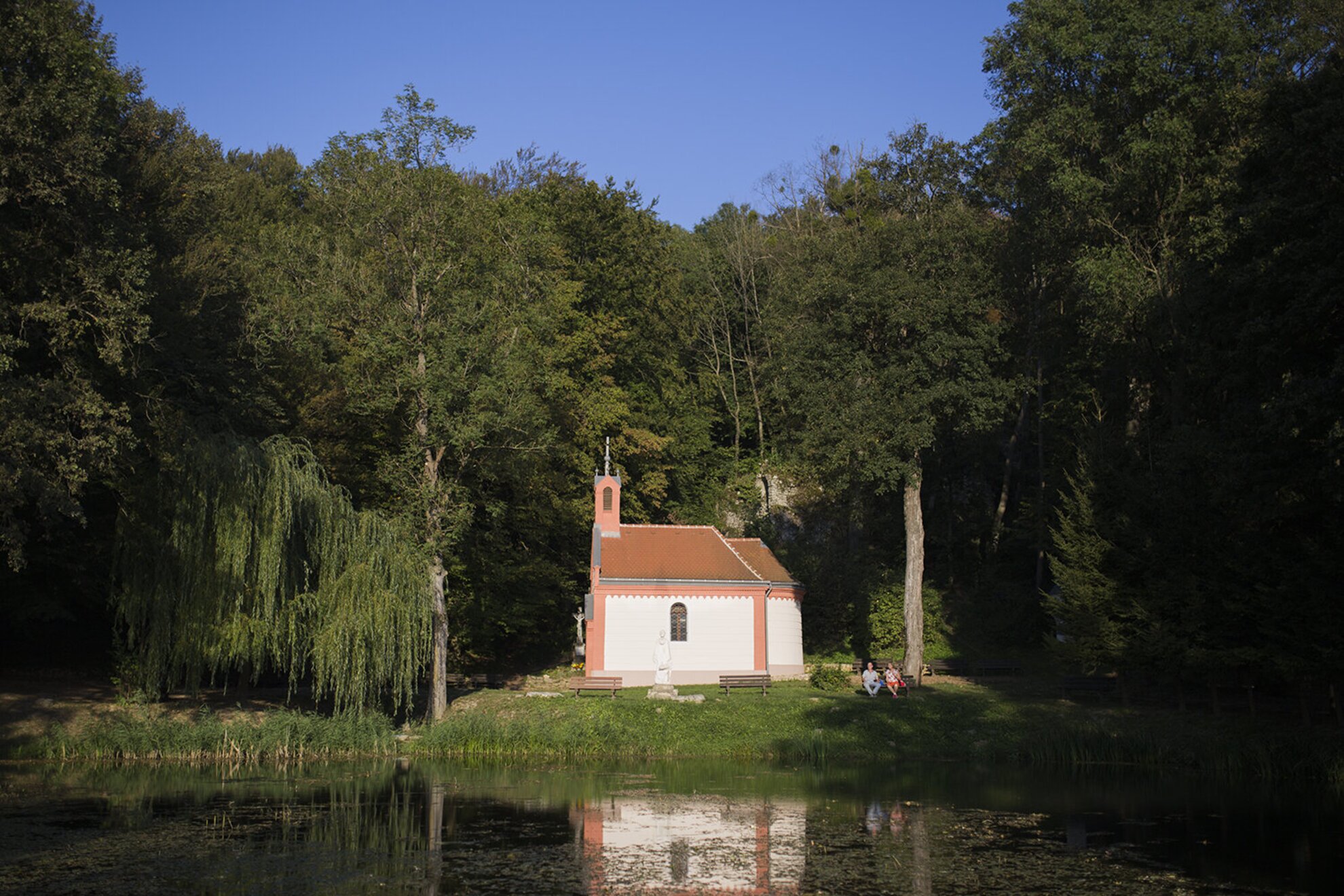
According to archeologists, the cliff was originally above today’s Borostyán-kút, while the chapel was on the top of today’s Calvary, somewhere behind the cross. The place of worship disappeared during the Turkish era, along with other buildings of the monastery of Bakonybél. According to a study about the history of the monastery from 1838, Saint Gerard was a hermit somewhere near the current cemetery and not at Szentkút.
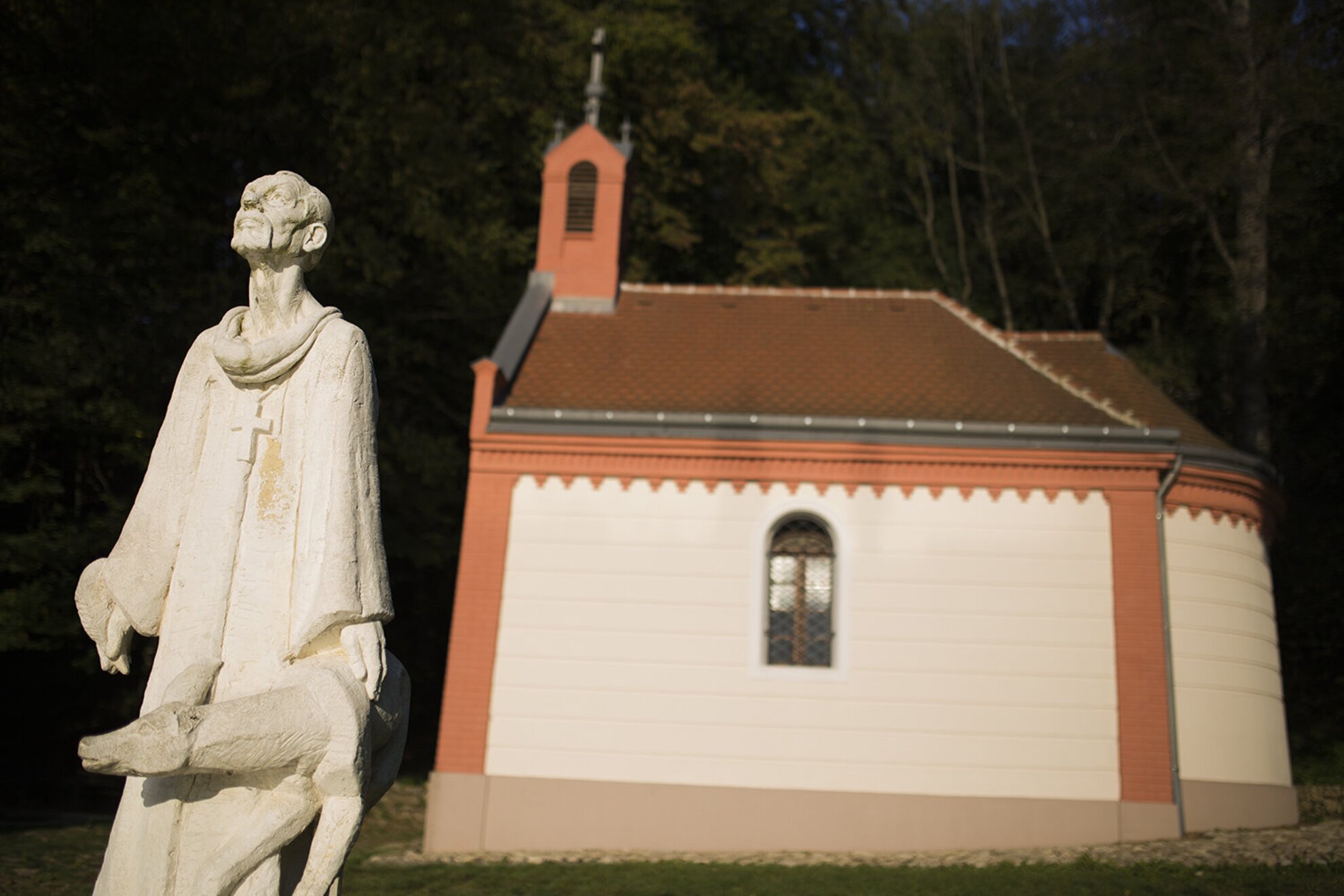
By the 20th century, there was no visible sign of the Saint Gerard chapel that stood at the old cemetery, so they built a new one at the Borostyán Well in 1824 and it was consecrated to honor Saint Gerard. The chapel above the well was built in 1855; more than 30 years later a catchment basin was created to collect the water from the springs at the foot of the hill.
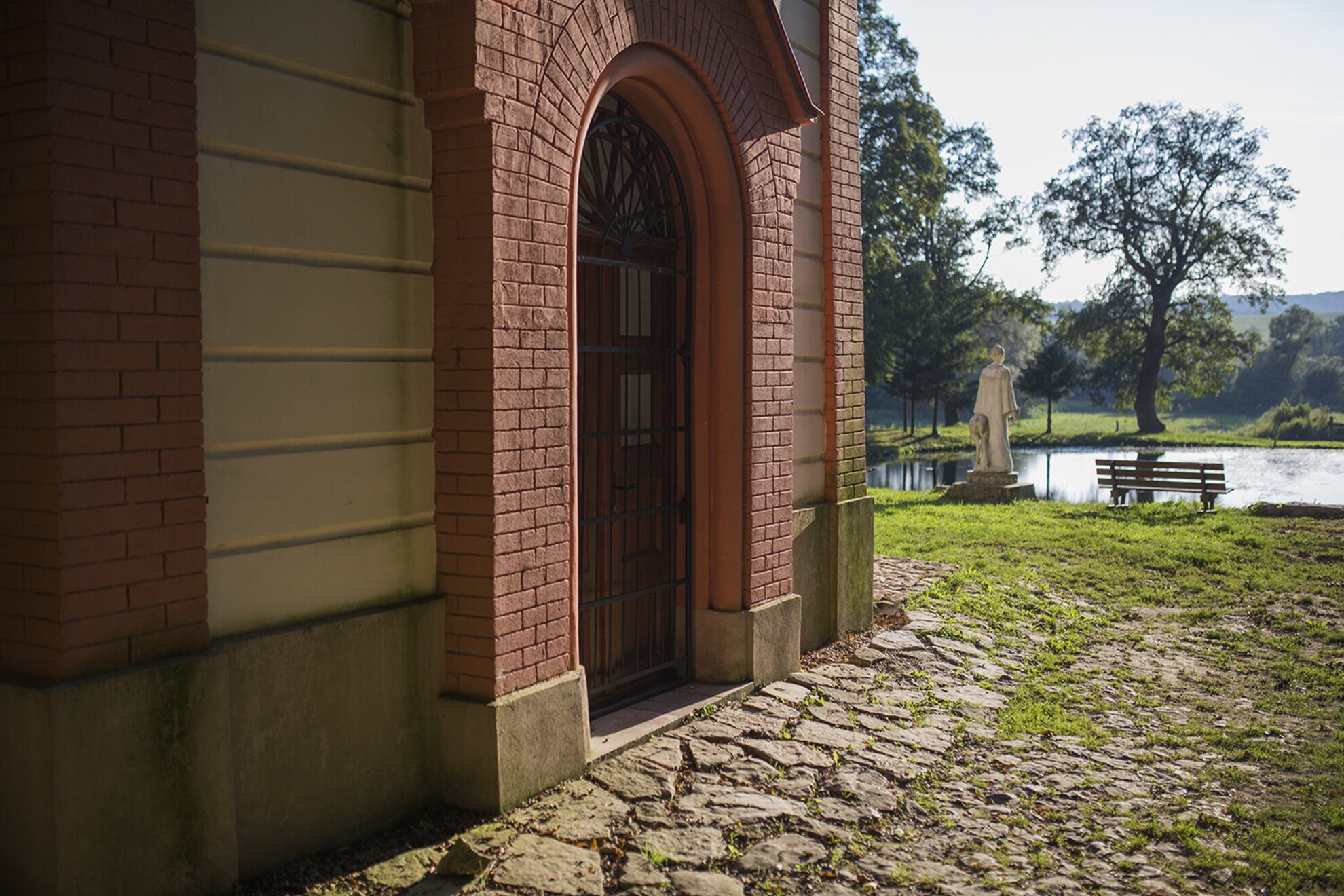
The local residents joined forces and started landscaping in 1996, and after the death of Tamás Cseh, who organized Indian camps here, they renovated the chapel to fulfill his wish.
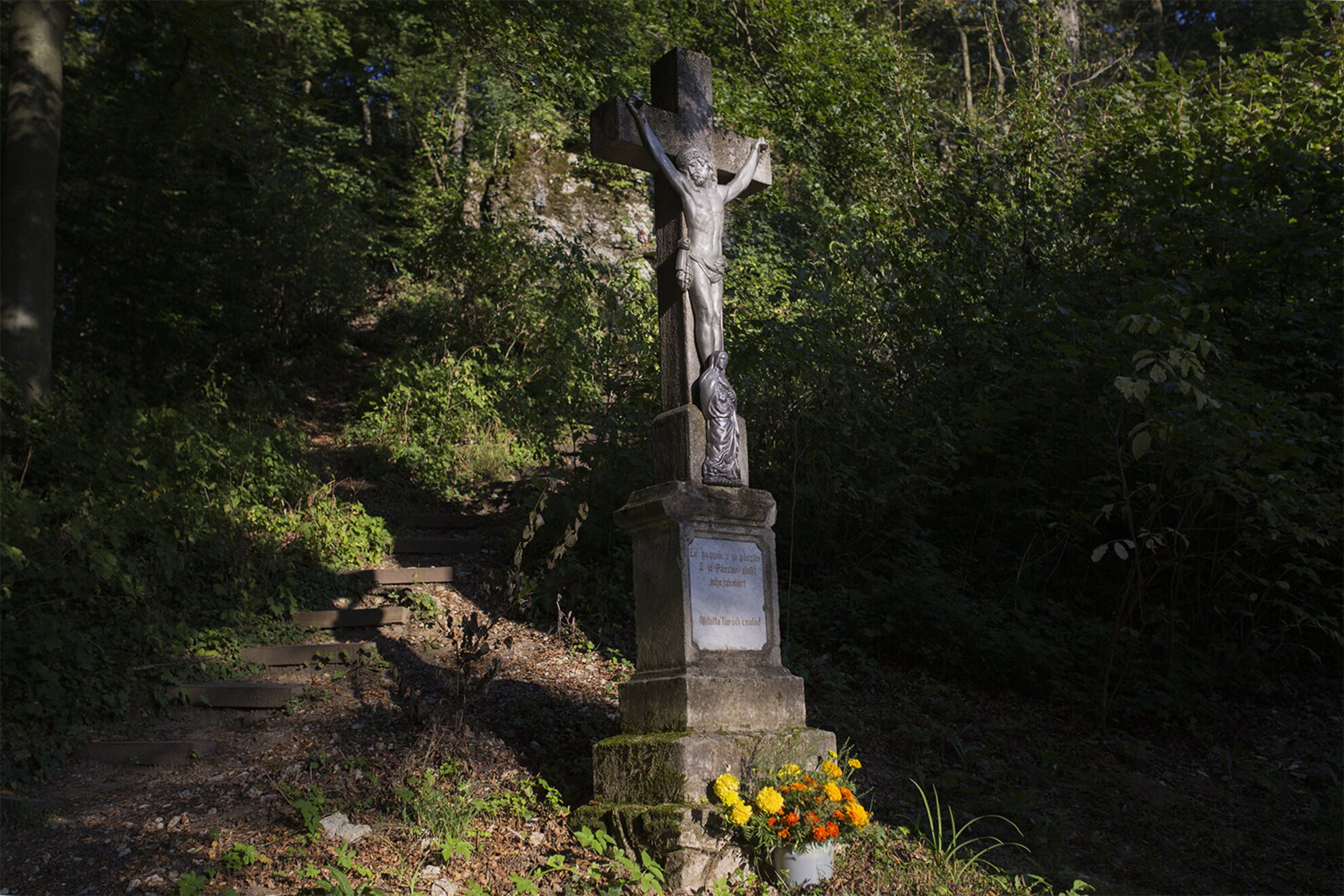
Since 2009, the area of the chapel at Borostyán-kút has been one of the seven natural wonders of Veszprém County.
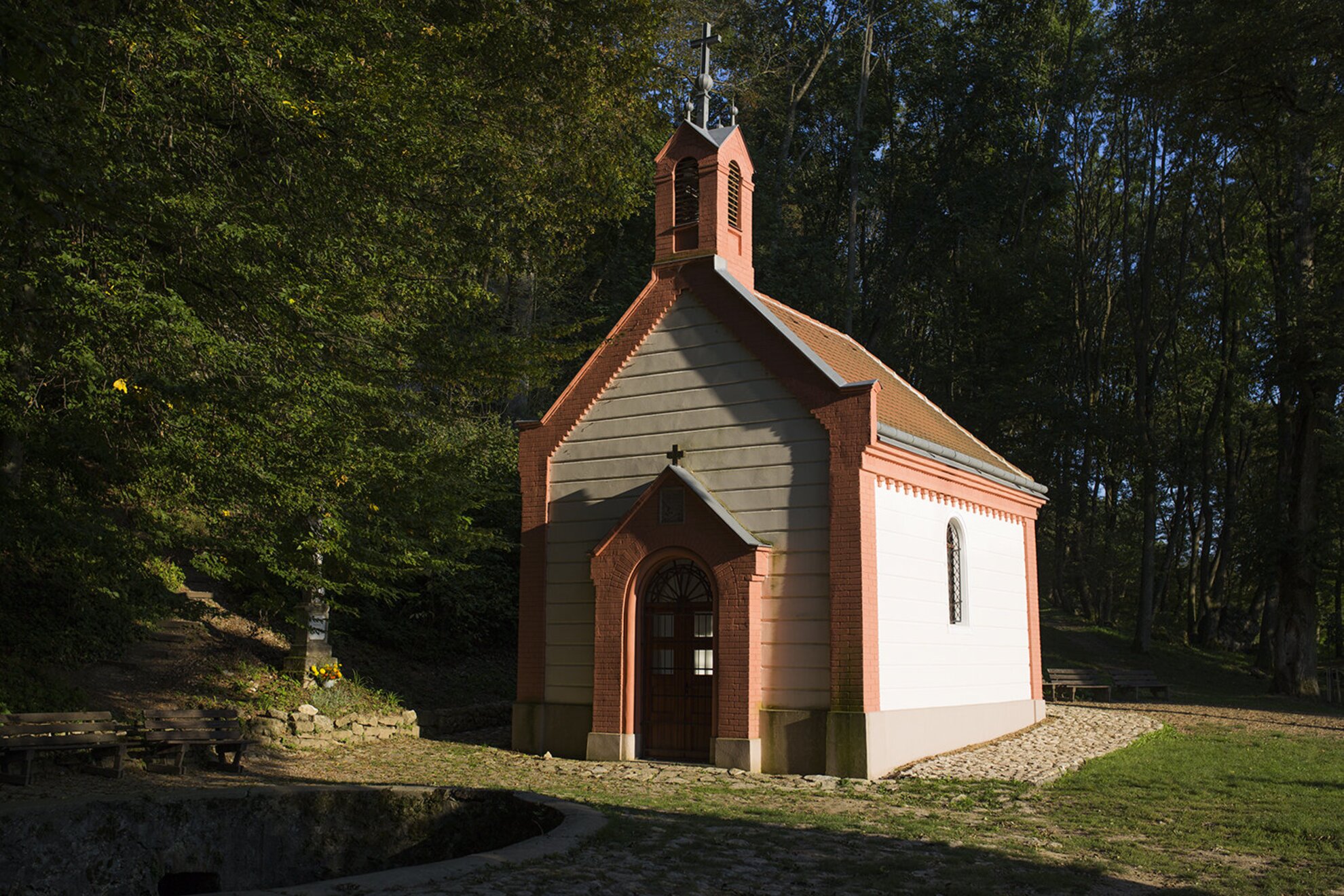
The other famous sight of the area is Hubertlaki Lake which is sometimes also referred to as the Bakonyi Gyilkos (“Killer”) Lake. The latter name originates from the Gyilkos Lake of Romania (“Killer Lake” or Red Lake).
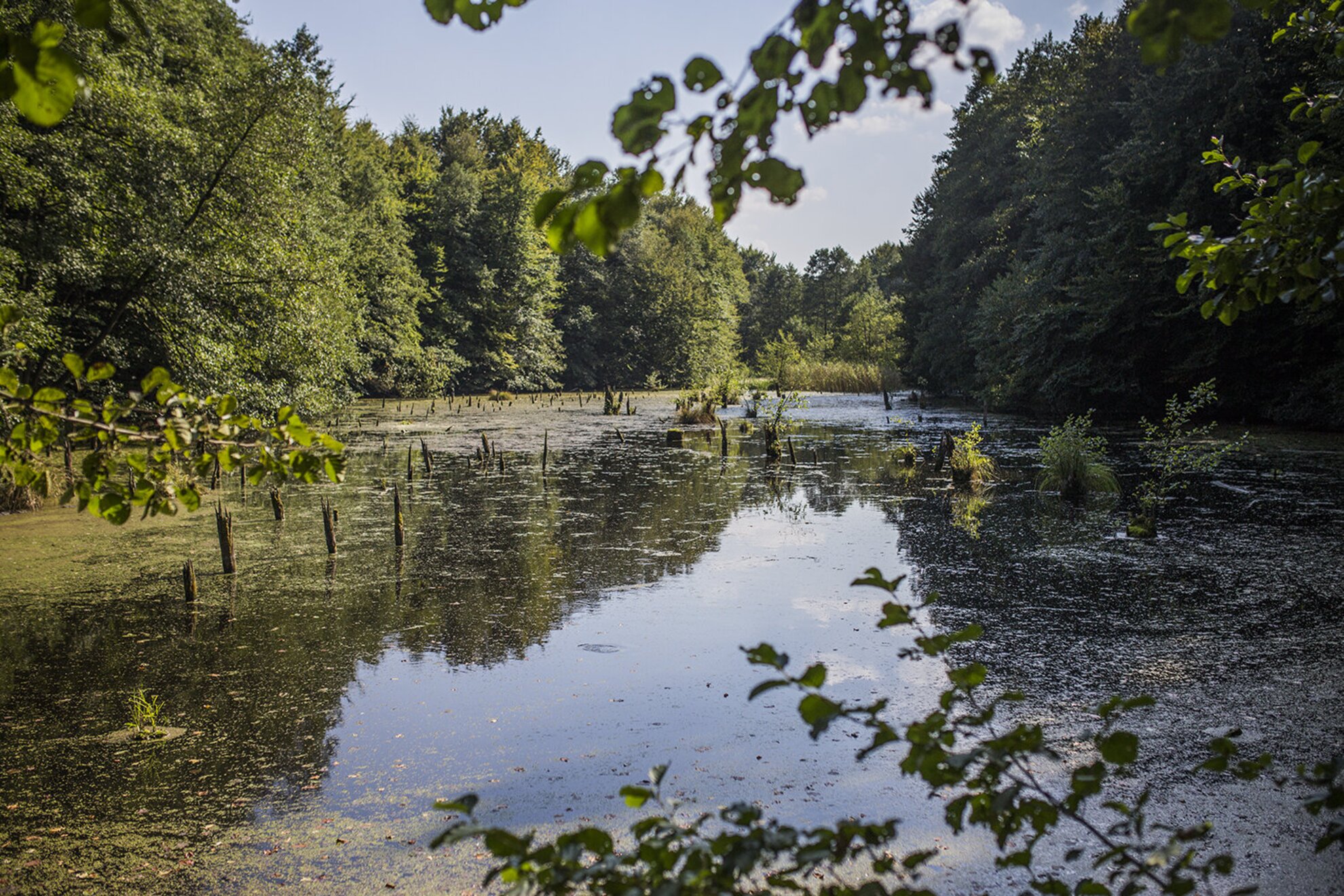
The lake is fed by a stream called Hamuházi-séd and it was formed by creating an artificial dam. The water of the lake is very clear, and we heard that hikers even saw some newts in it.
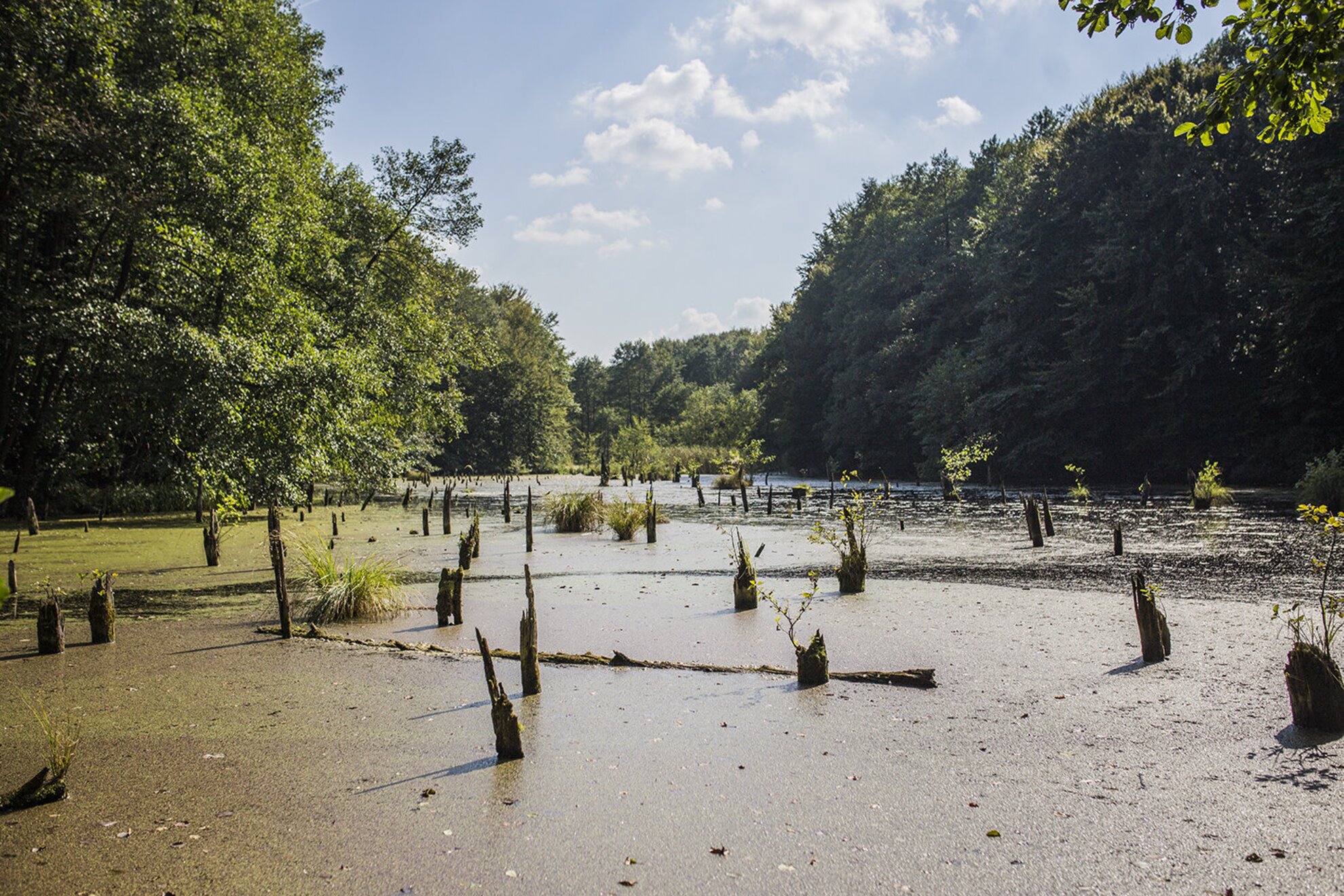
The highest mountain of Bakony, Kőris-hegy, with Vajda Péter Lookout on its top can be reached by multiple trails, including the National Blue Trail’s Bakony Mountains section.
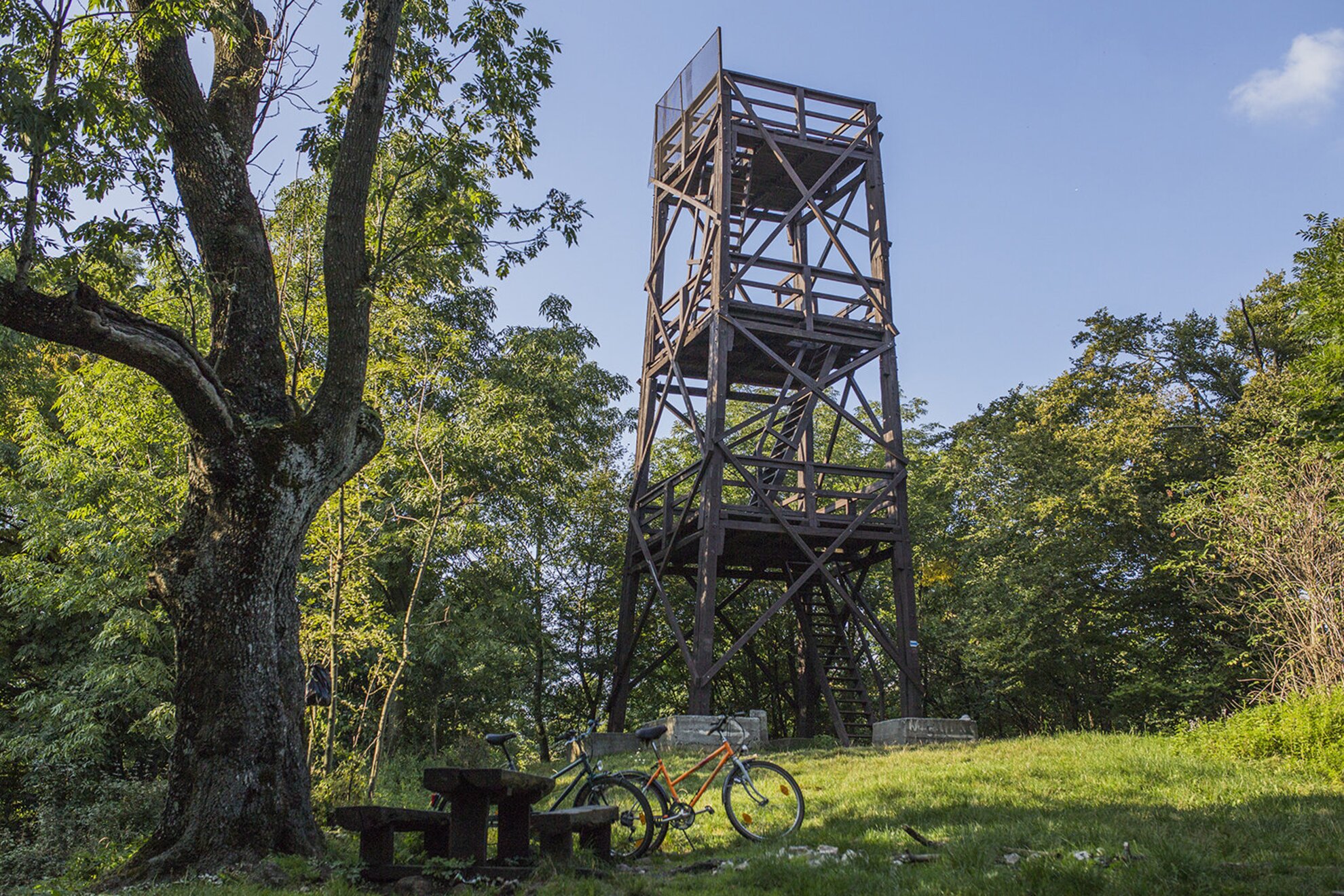
The pedestal of the lookout is 709 meters above sea level. You can not only see Lake Balaton, Kab Hill, Somló, and the Pannonhalma Archabbey from here, but if the weather is clean, you can even spot the two thousand meters tall peaks of the Alps 150 kilometers away.
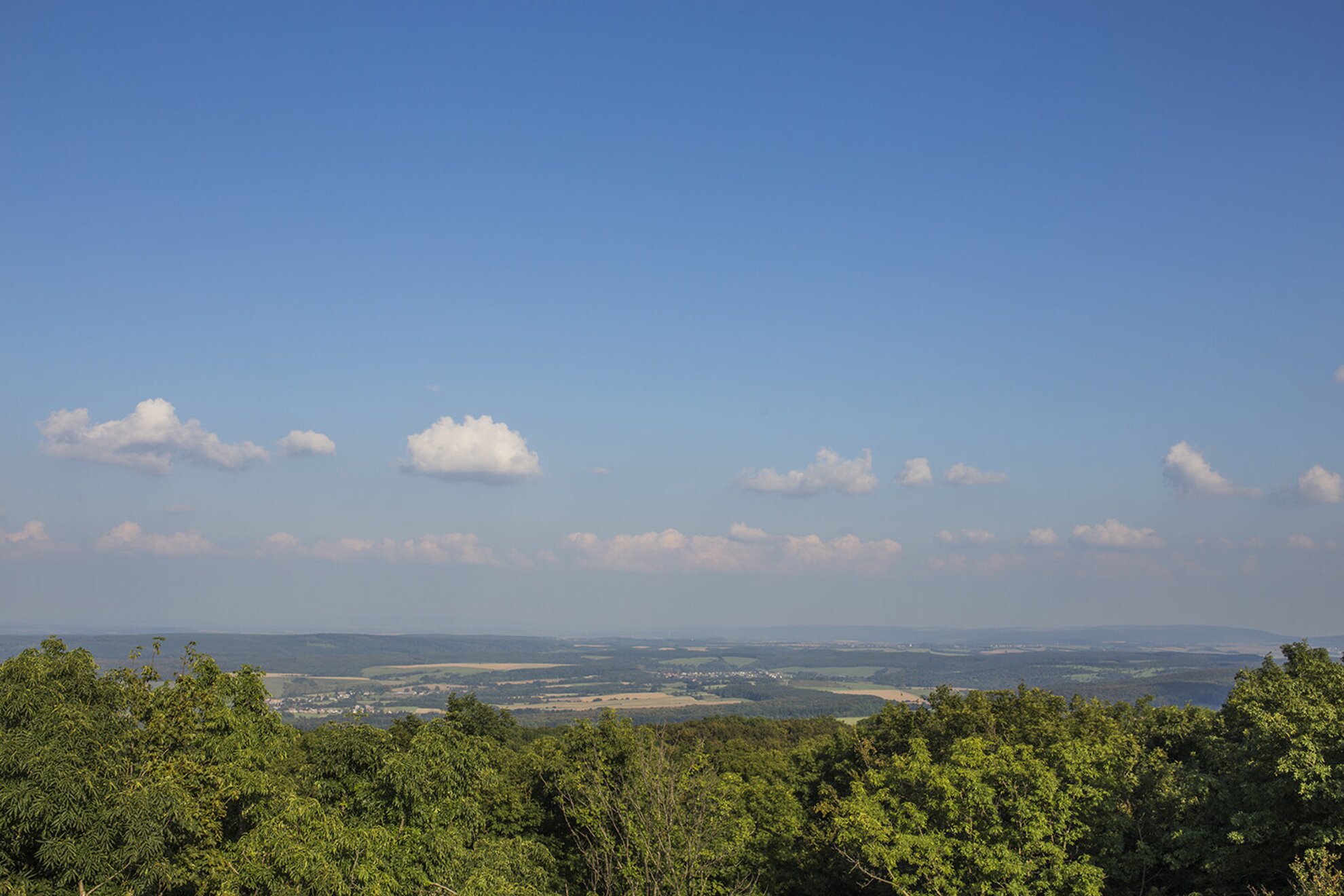
The hill was named after the ash trees ("kőris" in Hungarian) that cover the area.
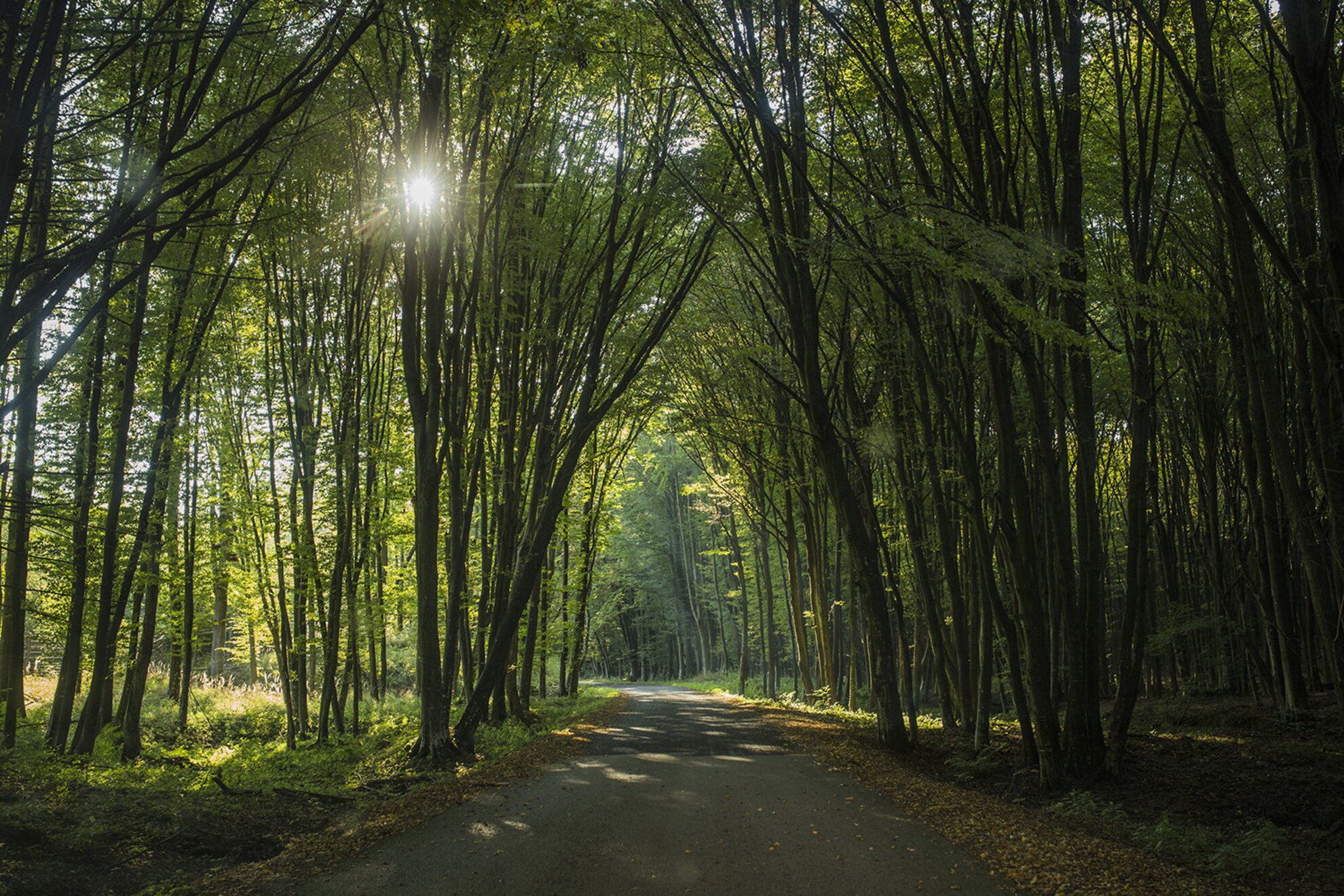
The white dome of the Kőris Hill civilian air traffic control radar station is 50 meters away from the lookout. Entry to the area is prohibited.

After spending time surrounded by nature, it pays off to visit Bakonybél’s Pannon Observatory, from where you can see even beyond the Alps. Telescopes, a digital planetarium, and exhibits on the history of astronomy and space exploration await guests here.
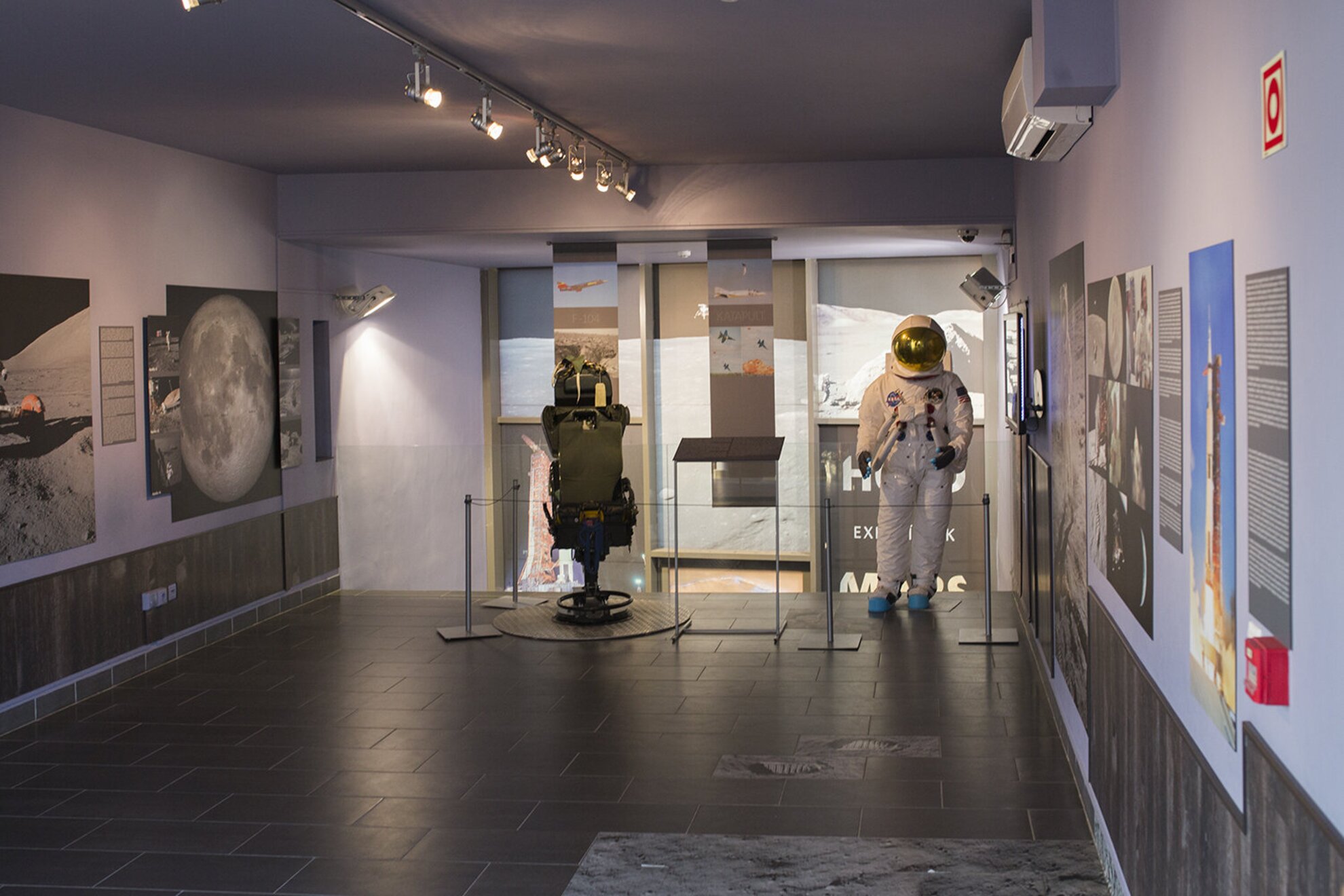
Here you can ask all the questions you have about the benefits and dangers of Elon Musk’s plan about the colonization of Mars, and you can watch astronomy related movies at the 3D cinema.
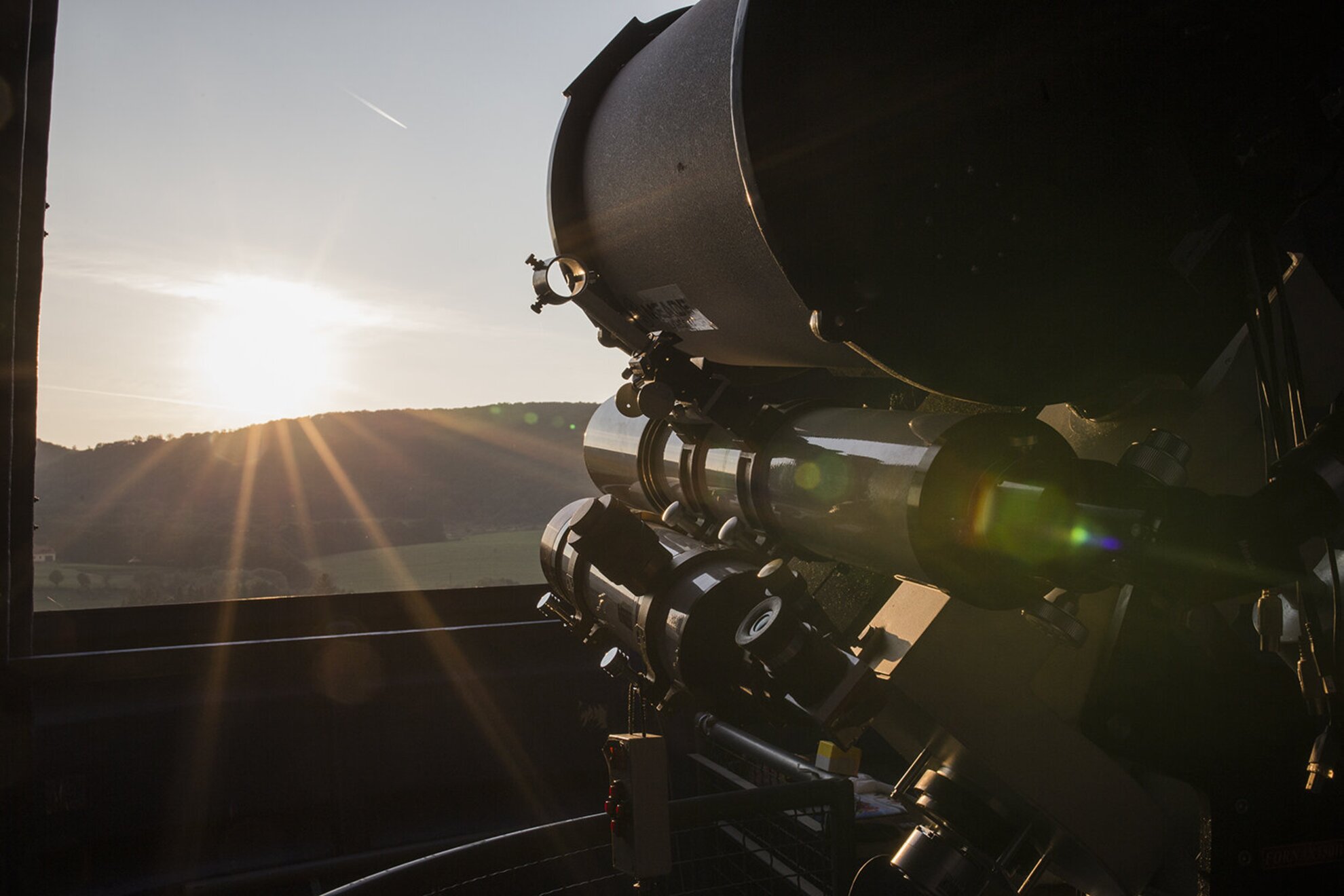
And to make the space-travel in Bakonybél complete, we can watch solar flares from quite “close”.
